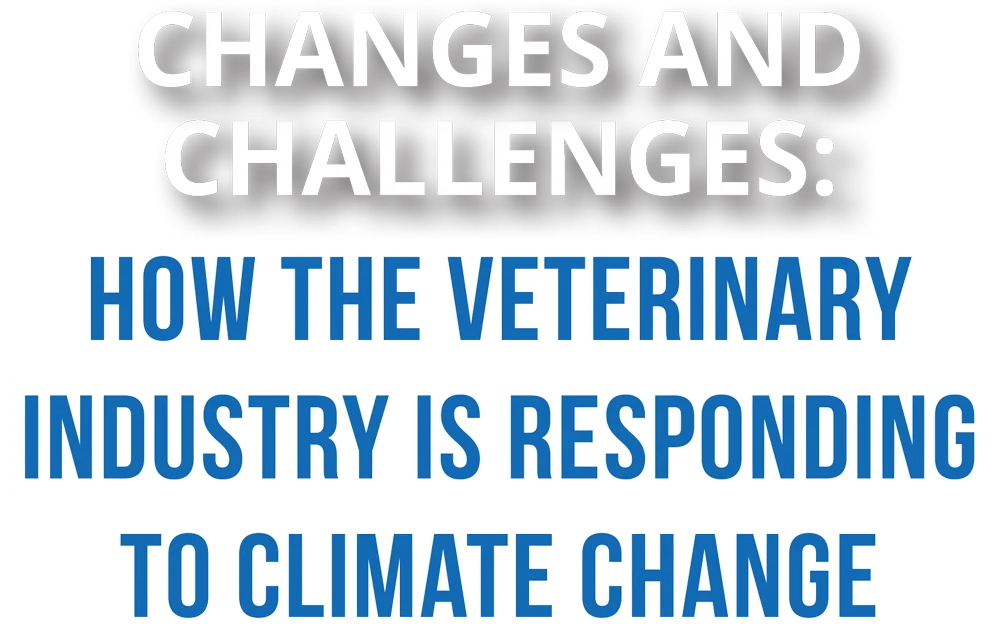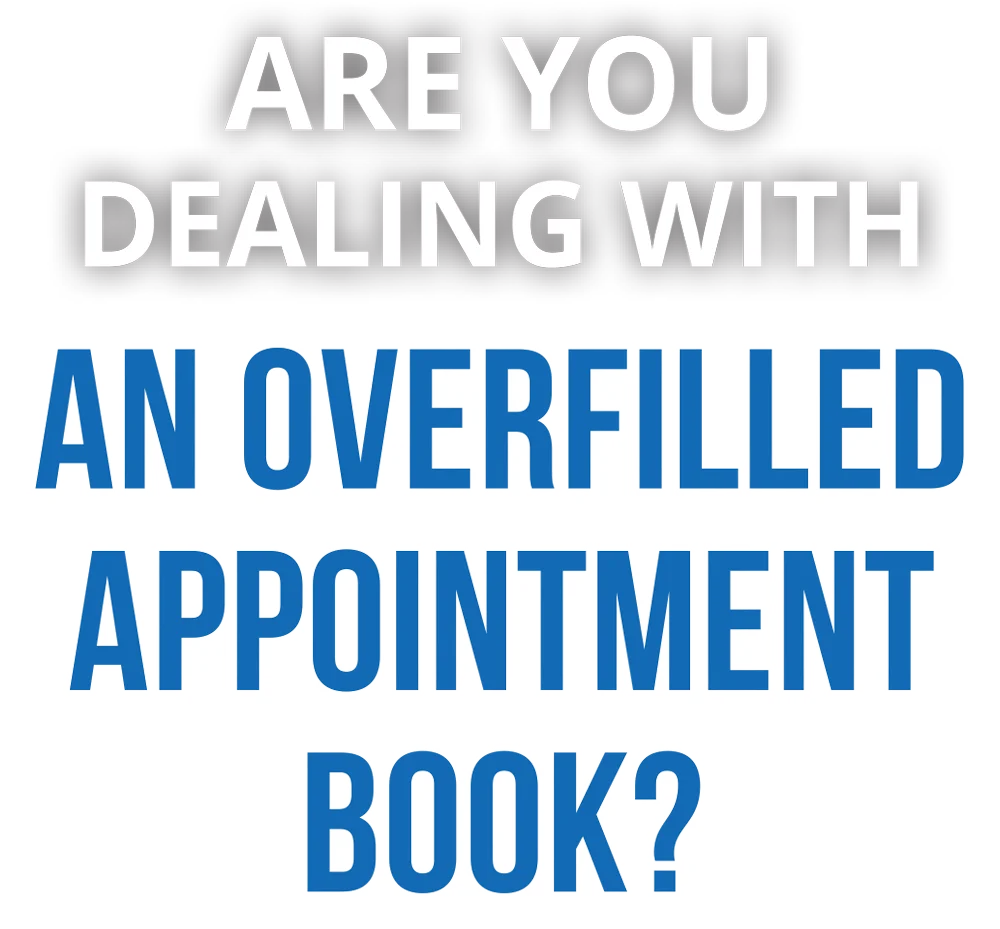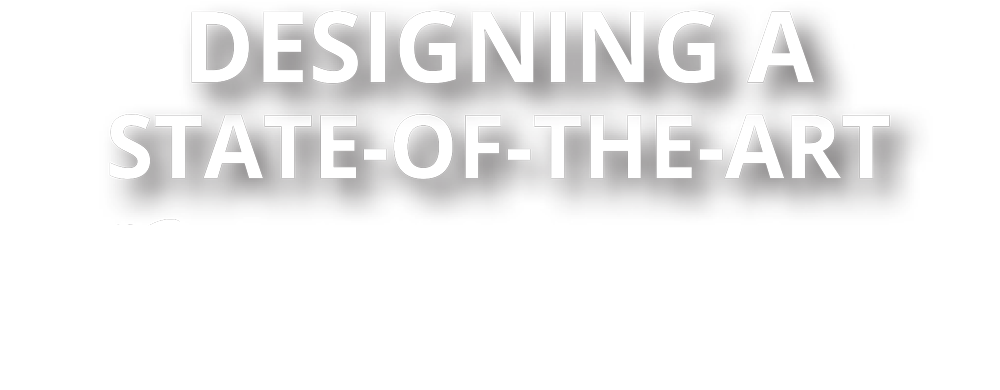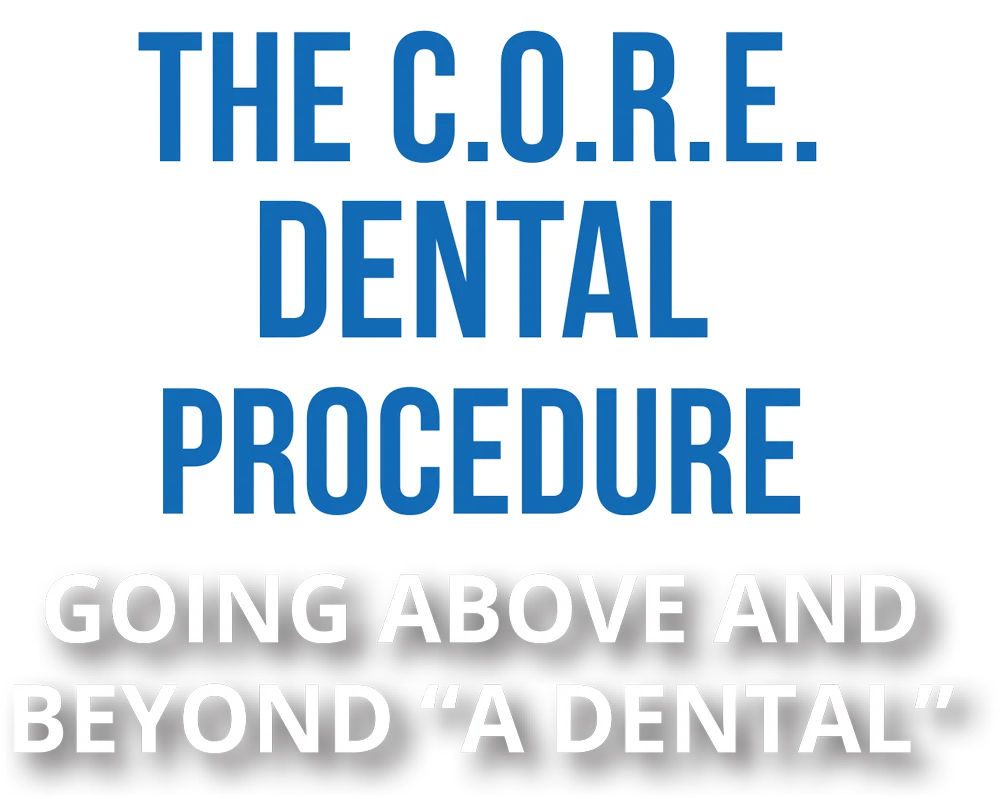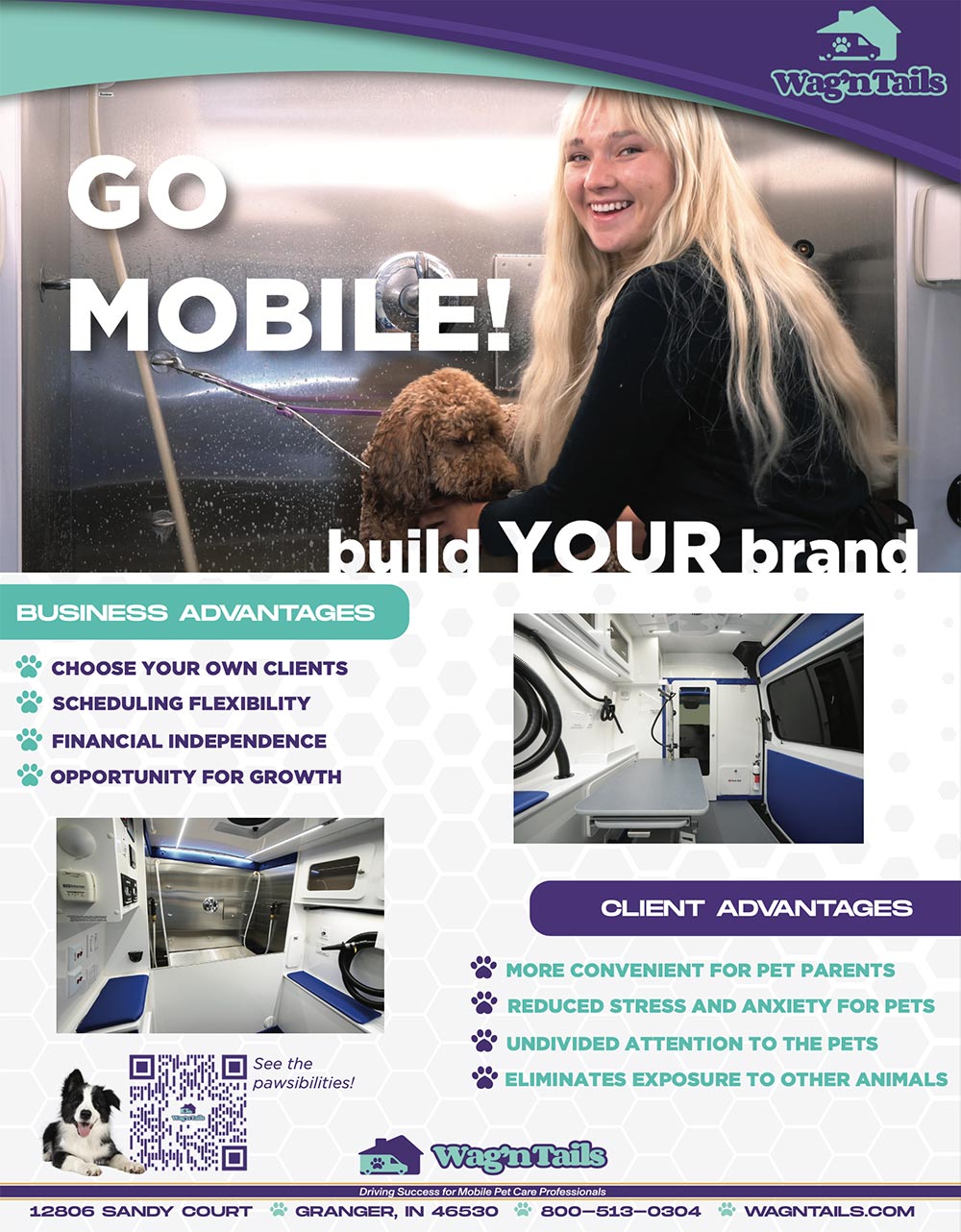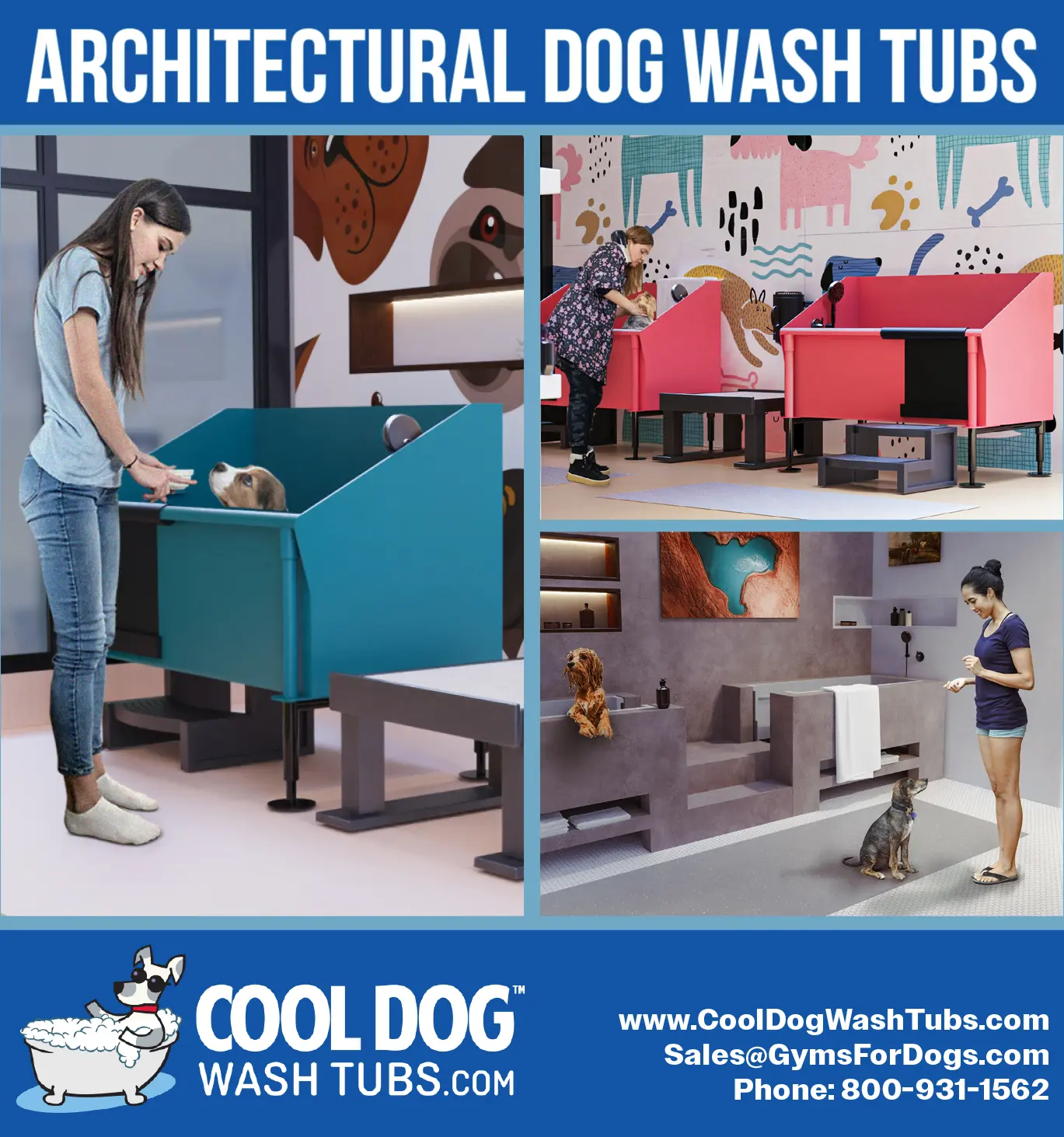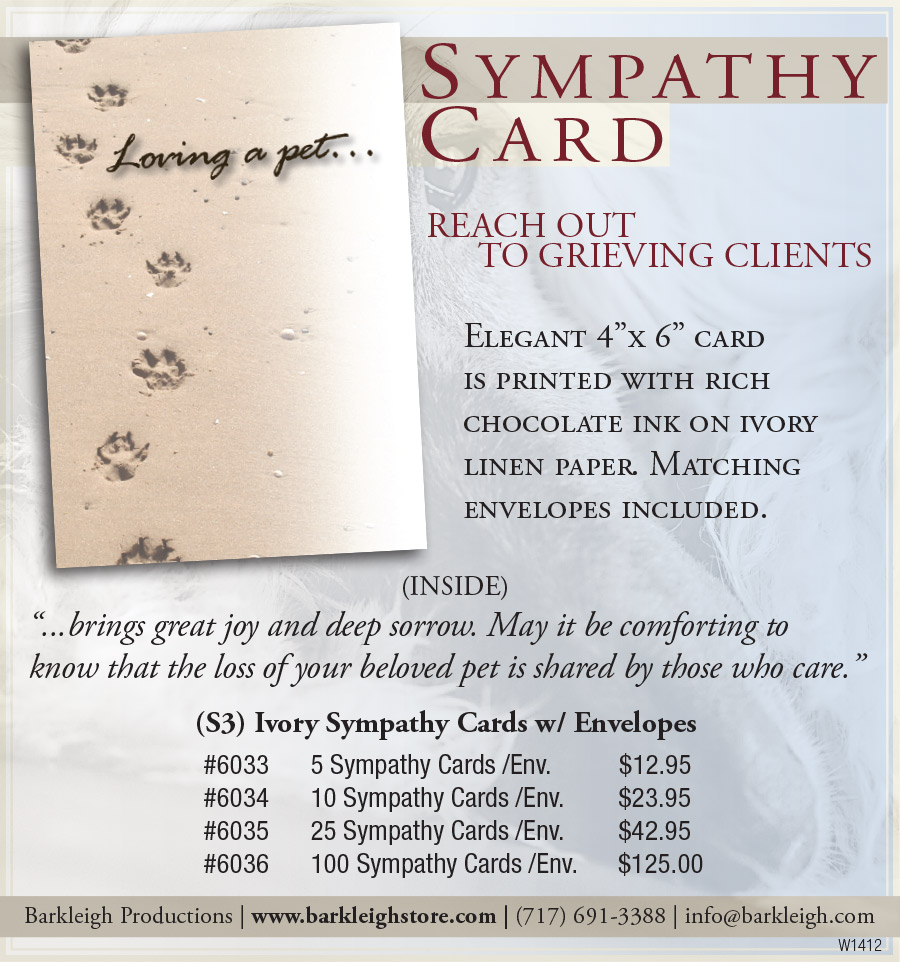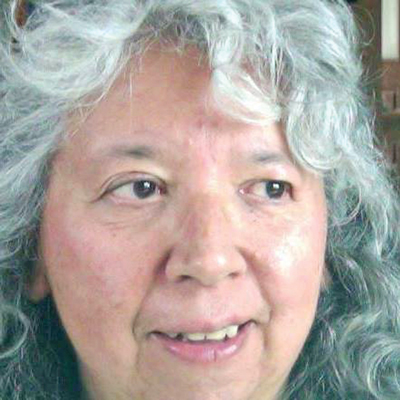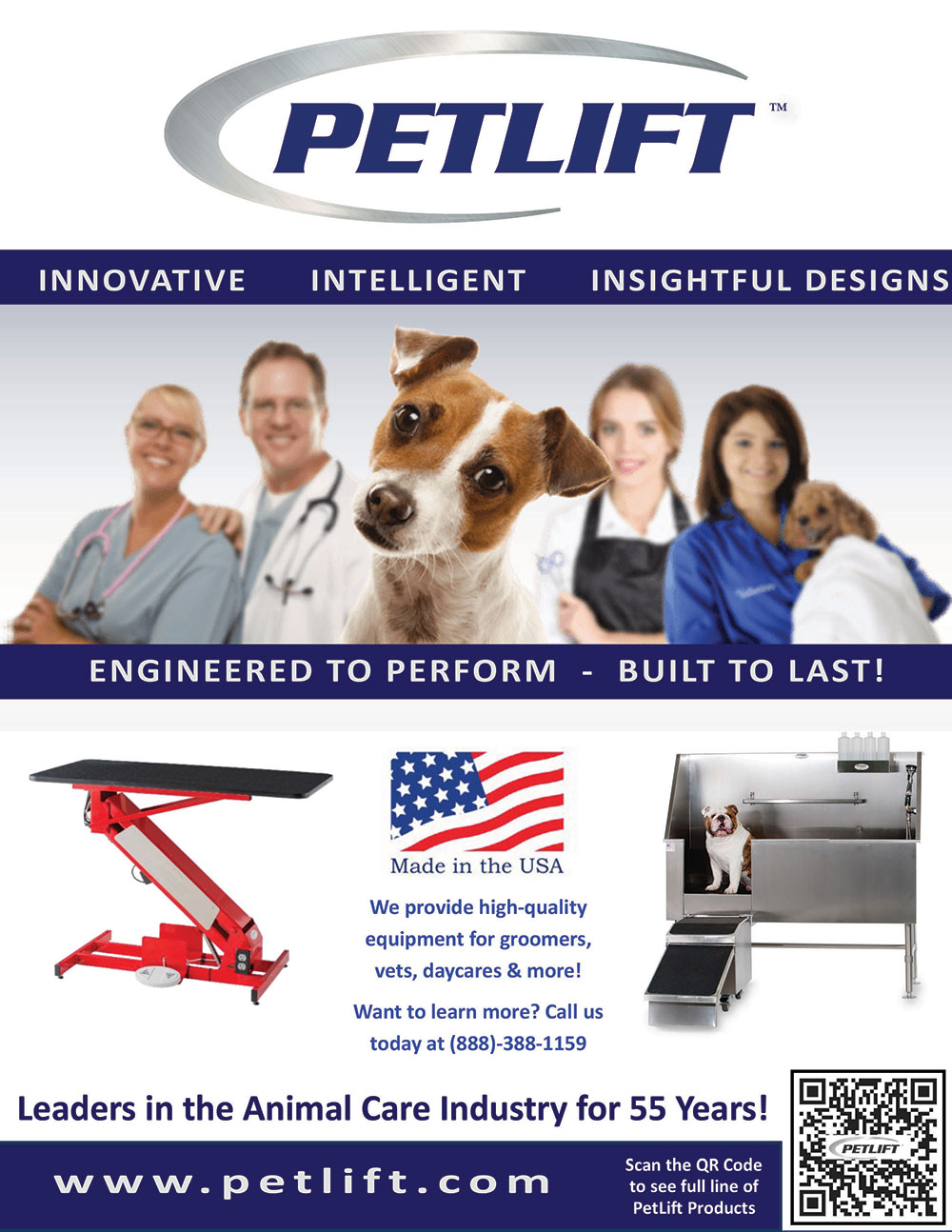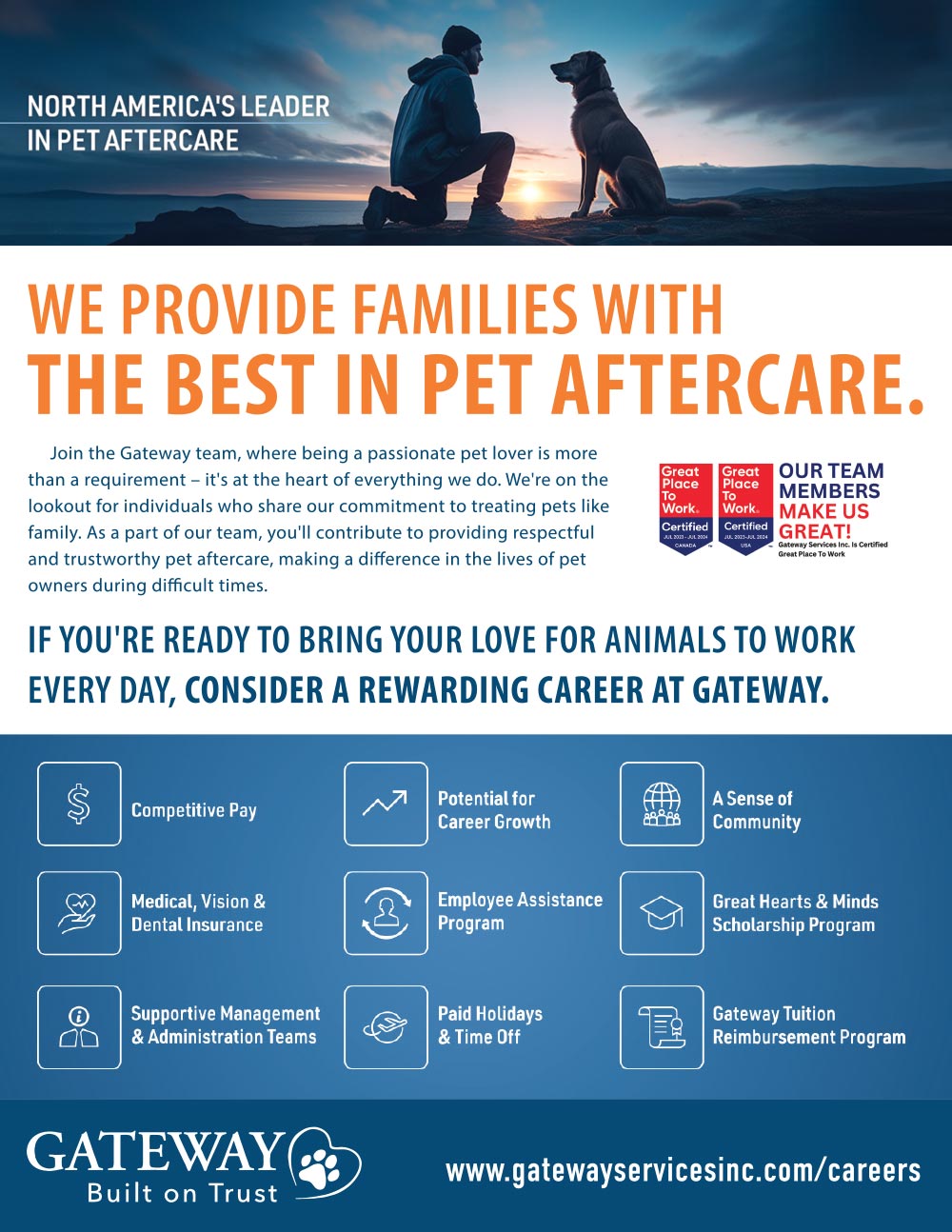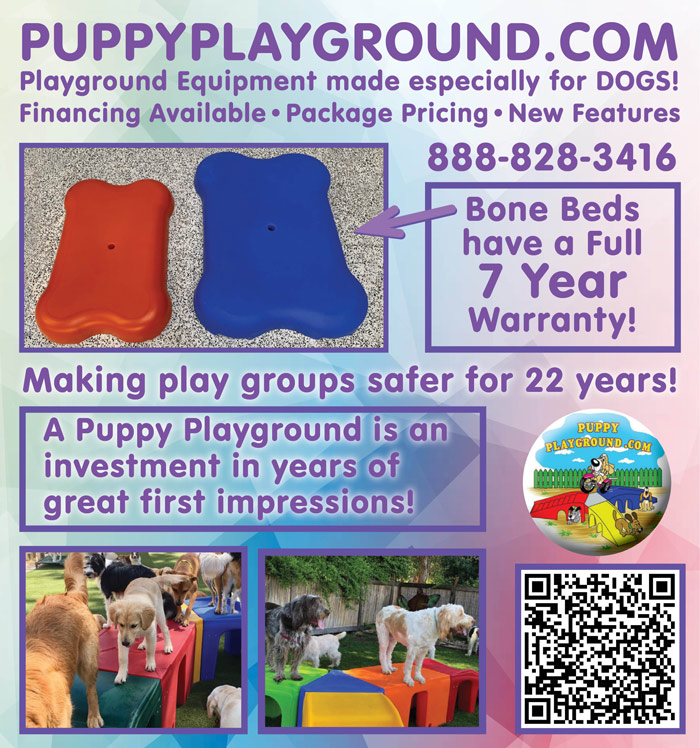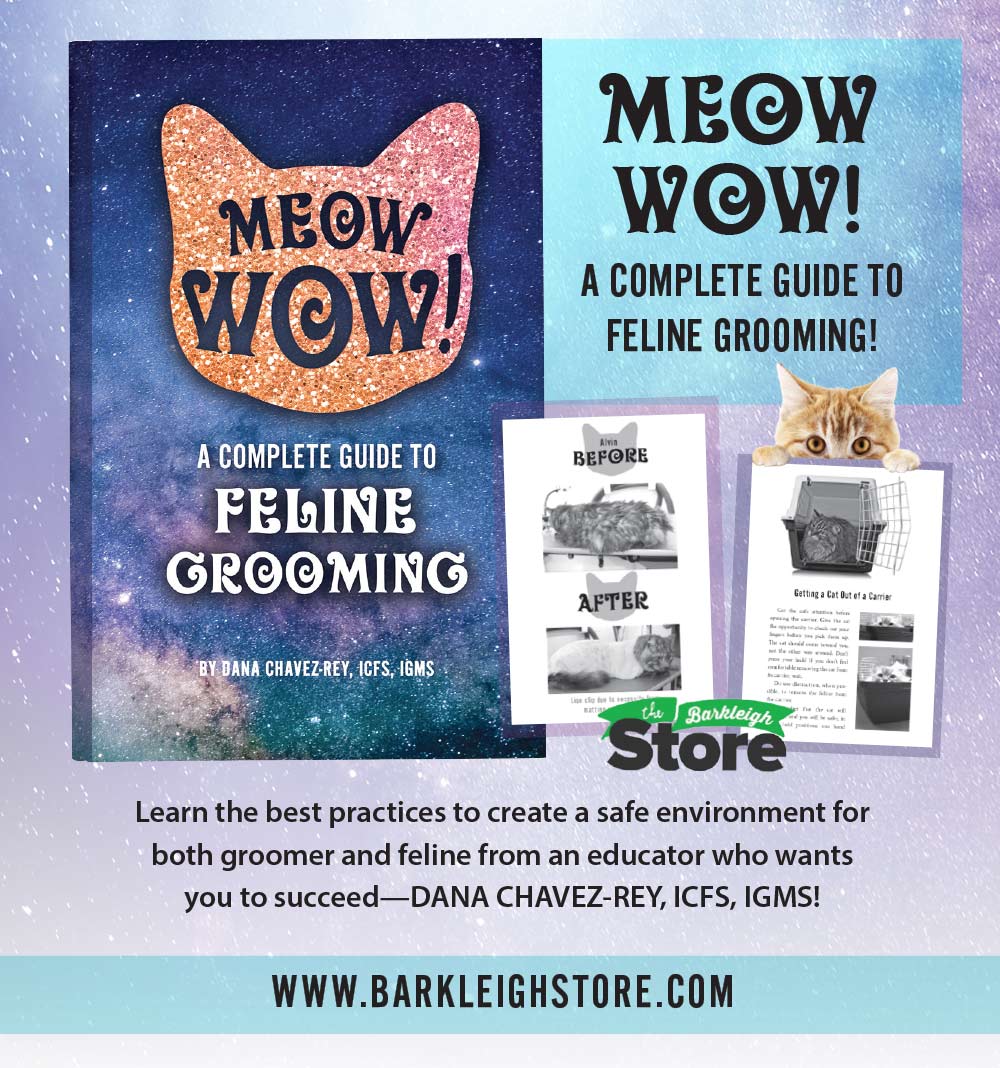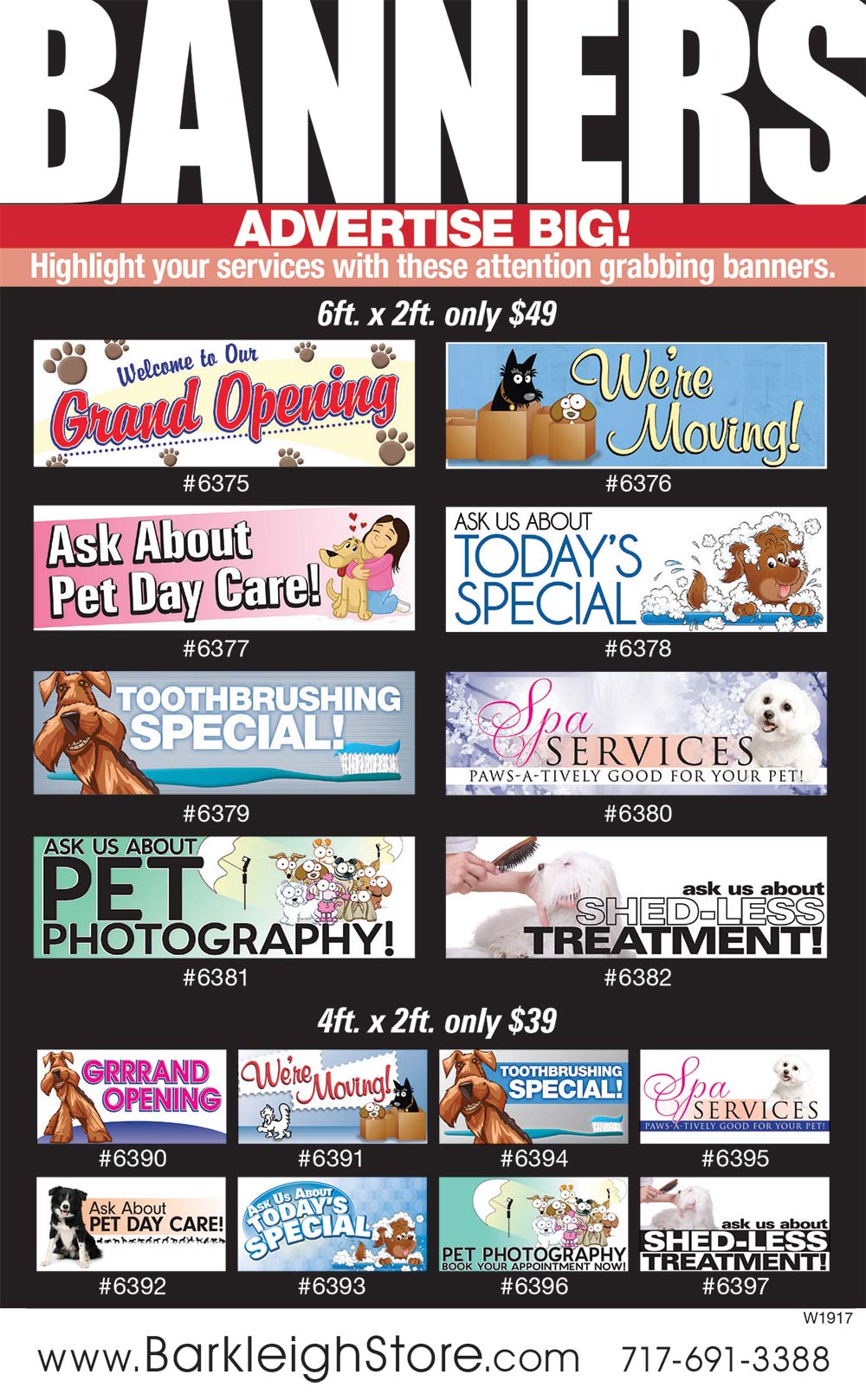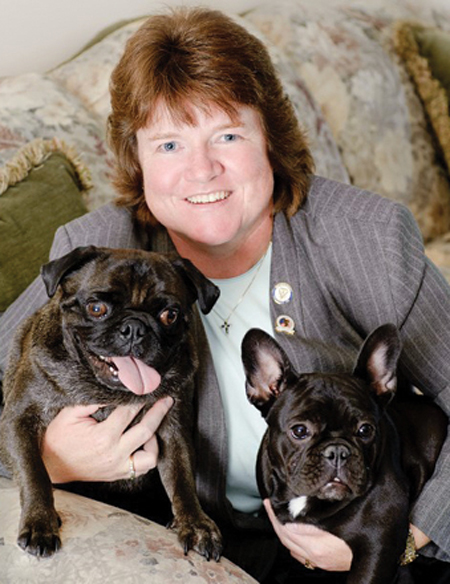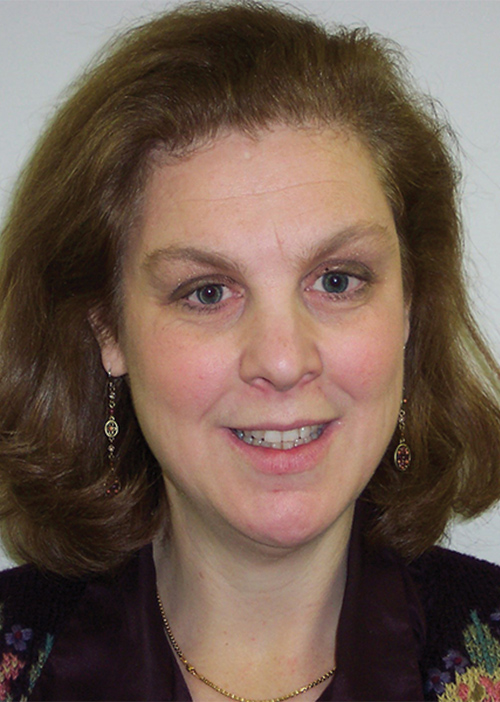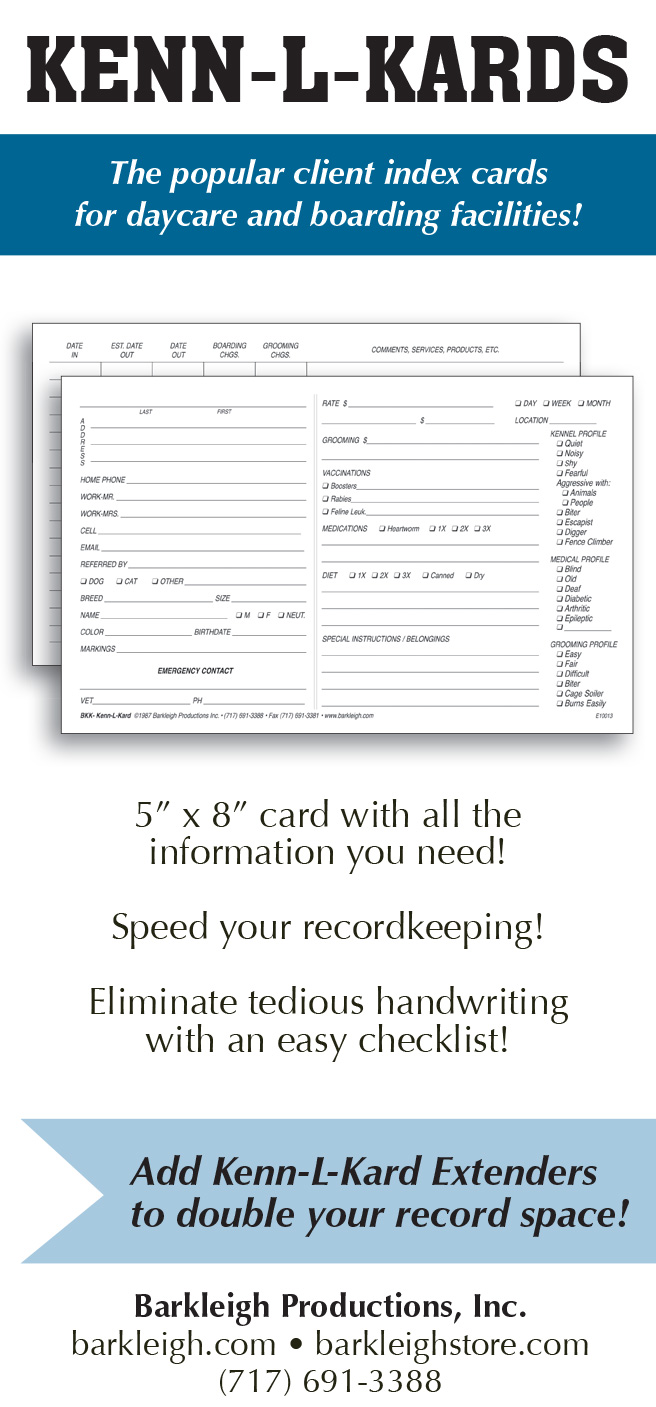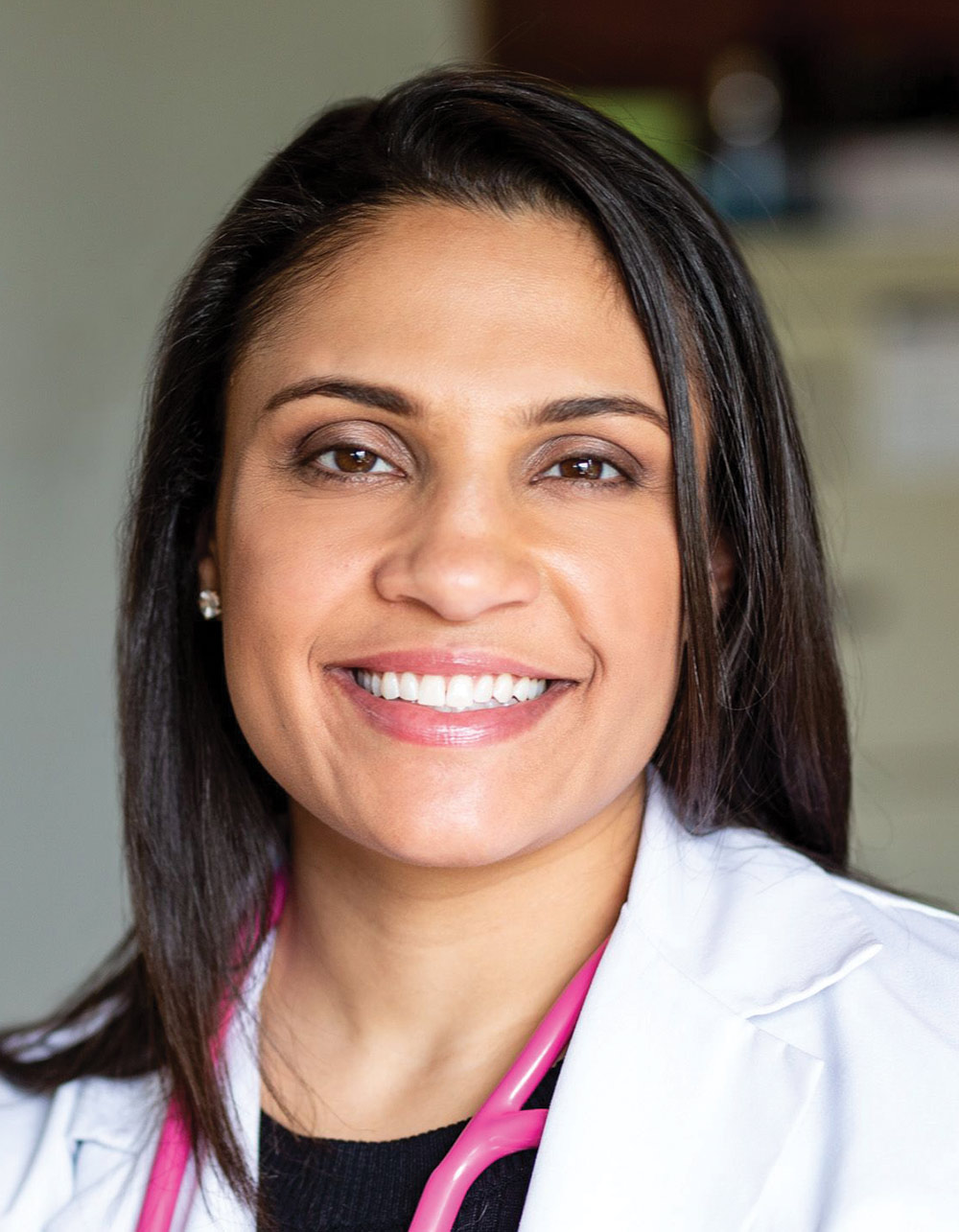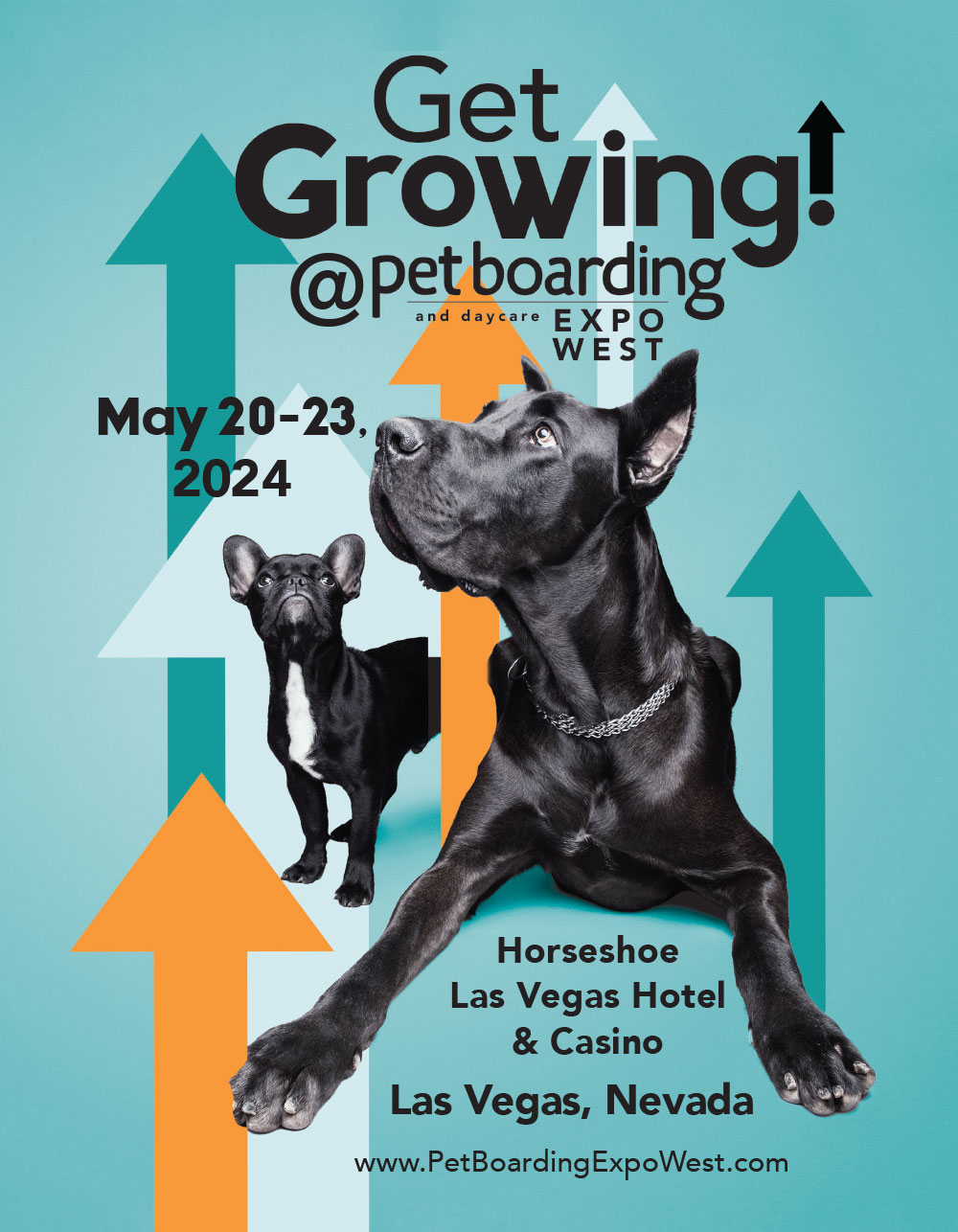
info@barkleigh.com
(717) 691-3388
Editorial
rebecca@barkleigh.com
Advertising
james@barkleigh.com
- Animals Ink8
- Barkleigh – Pet Pro Cruise19
- Barkleigh – Subscribe36
- Barkleigh Store – Banners25
- Barkleigh Store – Boarding Kennels18
- Barkleigh Store – Boarding Kennels29
- Barkleigh Store – Feline Grooming23
- Barkleigh Store – Kenn-L-Kards31
- Barkleigh Store – Sympathy Cards12
- Cool Dog Wash Tubs9
- Gateway
View Our Spotlight 35 - OraStripdx27
- Pet Boarding & Daycare Expo West34
- Pet Business Insurance21
- PetLift13
- Professional Pet Boarding Certification7
- Puppy Playground17
- Wag’n Tails2

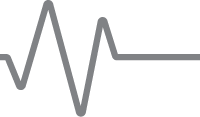
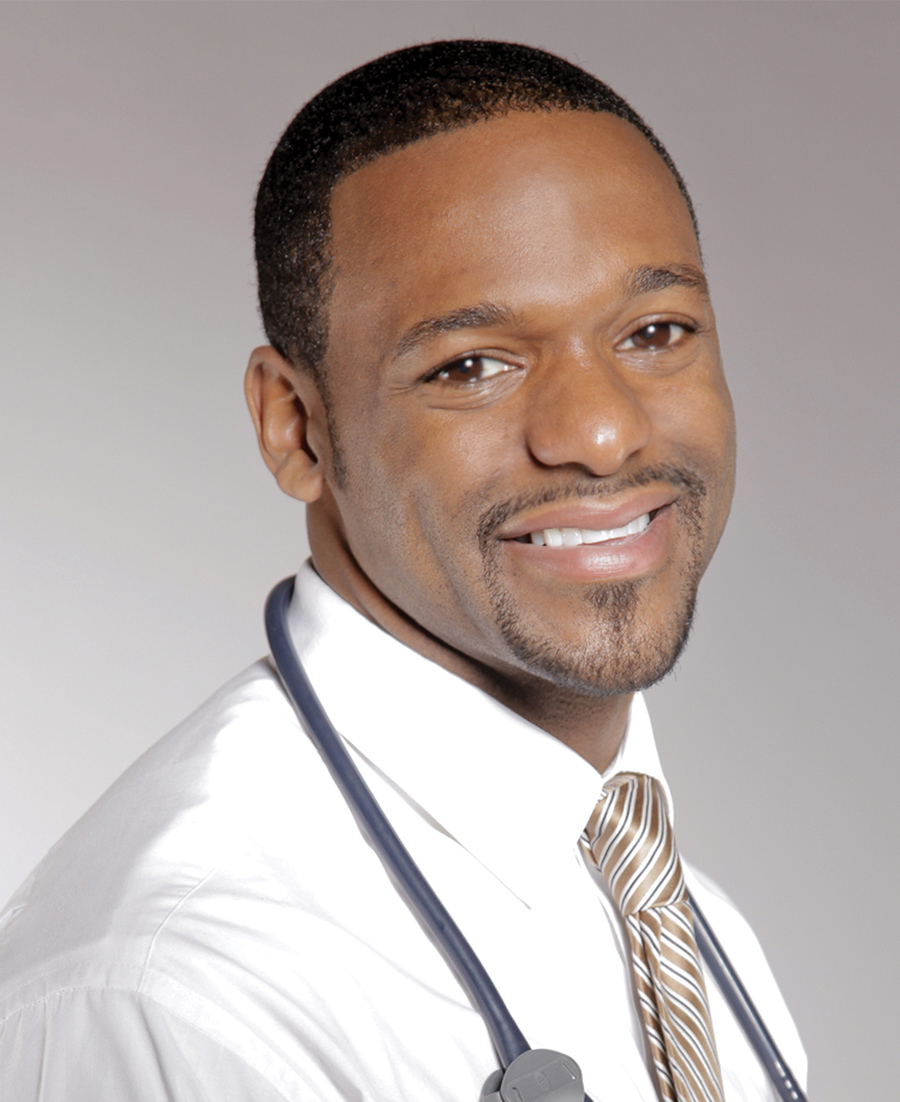
DVM, DACVS-SA

Jenifer Chatfield
DVM, Dipl. ACZM, Dipl. ACVPM
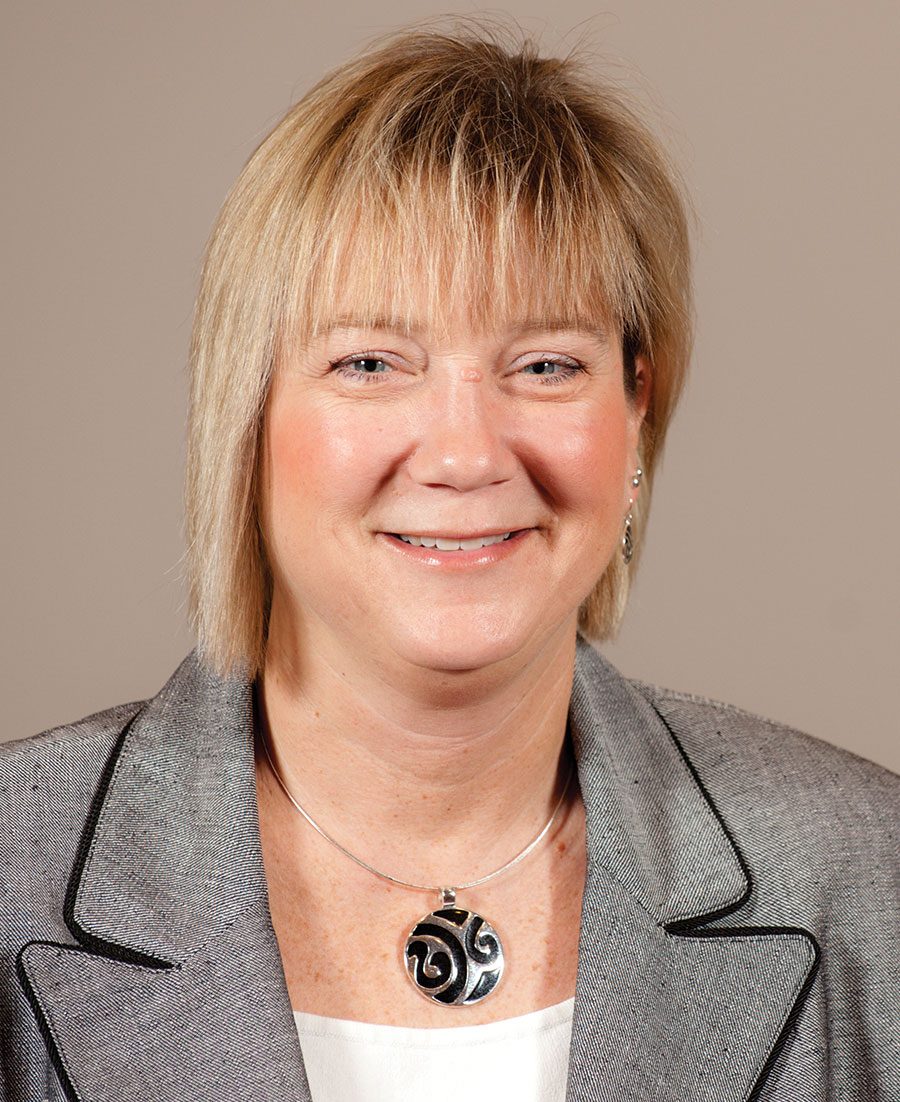
CVT
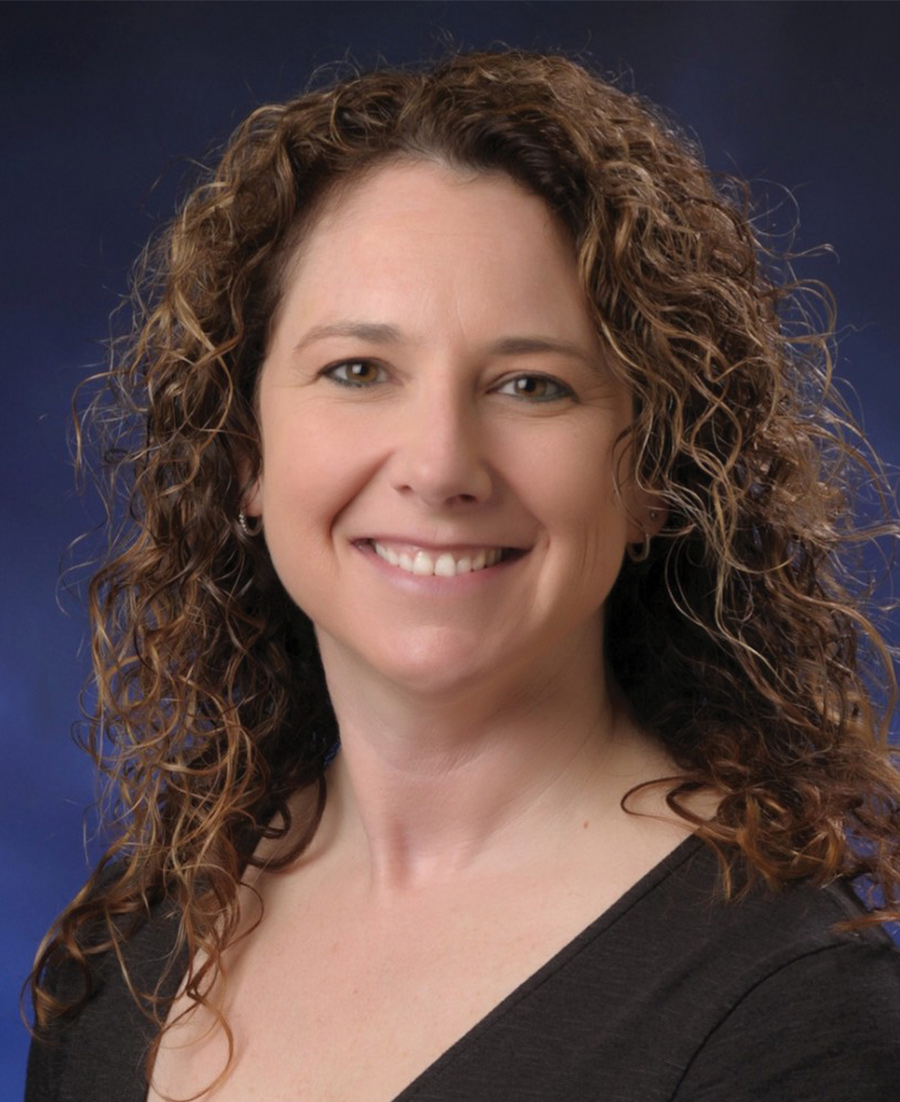
DVM, DACVECC
-
STAFF
- Publisher
Barkleigh Productions, Inc. - President
Todd Shelly - Vice President
Gwen Shelly - Chief Operations Officer
Adam Lohr - Executive Editor
Rebecca Shipman - Art Director
Laura Pennington - Sr. Graphic Designer
Brandi Aurelio - Jr. Graphic Designer
Carlee Kubistek - Web Master
Luke Dumberth - Marketing Consultant
Allison Smith - Social Media Coordinator
Cassidy Ryman - Digital Media
Evan Gummo - Director of Marketing & Client Relations
James Severs - Accounts Manager/ Executive Assistant
Karin Grottola - Administrative Assistant
Britany Smith
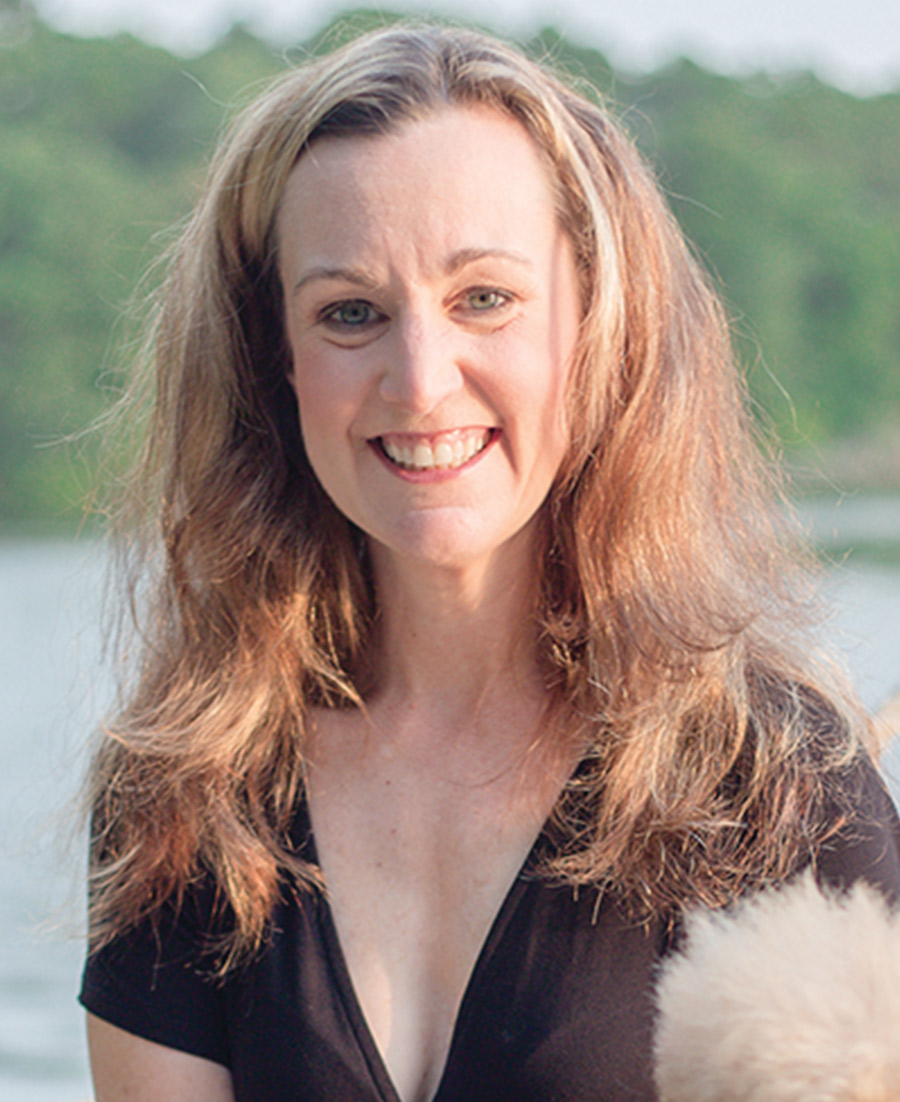
DVM, CVPM



– Steven R. Honzelka,



By Benita Altier LVT, VTS (Dentistry)
eterinary professionals have long been communicating with clients about dental care for pets by calling the procedure “a dental.” This adjective, used like a noun, has dominated the fabric of veterinary practices nationwide for at least as long as I have been a veterinary technician (over 35 years). No one ever told me not to call all dental care “a dental;” I just assumed that word described “it.”
Unfortunately, calling a discipline of medicine by one adjective does not even begin to define the complexity of our patients’ needs regarding oral and dental health. Using this term does considerable damage to the actual value of the procedure, which involves anesthesia, diagnostics, treatment, and preventative measures to ensure our animal patients do not suffer in silence from painful dental disease or other oral disorders.
I have visited, on average, over 100 hospitals a year for the past 13 years or so, and I rarely come across a hospital that uses a term other than “dental” for anything to do with the mouth. The term C.O.H.A.T., despite being defined as perfect for the task, has been slow to be fully embraced by the profession.

Another term that has come about is an actual word we frequently use. When added to the word “dental,” it makes sense to help us define and bring value to the foundational procedure that all animals need regarding looking for dental and oral disease and cleaning the tooth structures. That term is “core.” Core values, core curriculum, core vaccines and core wellness care are all phrases we use as a part of daily life. Dr. Paul Mitchell, DVM, DAVDC, coined C.O.R.E. to mean Comprehensive Oral and Radiographic Evaluation. When we say, “Your pet is due for their C.O.R.E. dental procedure,” we plan to take the following steps:
- Prepare the patient for anesthesia2 by a thorough “awake” examination of the body and vital signs and as detailed an oral examination as possible.
- Blood, urine, fecal testing, E.C.G., thoracic and abdominal imaging, or any other pre-anesthetic testing deemed appropriate by the doctor should be performed a few days before the planned anesthetic event.
- All testing results should be evaluated by the D.V.M. and reported to the client. Add on additional testing as needed to clear the patient for anesthesia.
- Admit the patient fasted and perform a physical examination, including standard vital signs with a blood pressure reading.
- Prepare an anesthetic plan and all equipment and materials to provide general anesthesia, including intubation and monitoring.
- Induce the patient, intubate, and provide intravenous fluid support. Ongoing monitoring of critical vital signs, including blood pressure, body temperature, heart rate, respiratory rate, and depth of anesthesia, should be provided and monitored by a trained technician or D.V.M. Active warming should be provided to ensure body temperature remains normothermic.
- Obtain “before” photographs of the rostral and right and left buccal sides of the dentition using gloved hands and a cheek retractor.
- Examine all soft tissues of the oral cavity from caudal to rostral, palate to sublingual, and all inner-lip mucosal tissues. Careful observations should be performed to look for any abnormalities or growths.
- Obtain full-mouth intraoral dental radiographs. Have the D.V.M. begin to interpret these images.
- Rinse oral and dental tissues with a 0.12% chlorhexidine solution.
- Perform gross removal of tartar or calculus to facilitate the comprehensive oral examination.
- This step is abbreviated if there are little to no calculus accumulations on the tooth surfaces.
- Using a dental probe-explorer instrument, a dental mirror, lighting, and magnification, fully evaluate all tooth surfaces and the periodontal structures. The dental probe should be gently advanced to a stopping point every few millimeters around every tooth. Abnormal probing measurements are noted when beyond the depth of a normal sulcus in the dog or cat.
- The treatment plan is updated once all pathology has been discovered or ruled out. The C.O.R.E. dental procedure is just the foundation procedure, so any treatment would be C.O.R.E. Plus (additional time) to treat dental or oral disease.
- All dental structures are thoroughly cleaned above and below the gingival margin using ultrasonic scaling (proper tip choice is essential) and hand scalers and curettes.
- All dental surfaces are then polished using a low-speed handpiece, prophy angle, and fine-grit prophy paste.
- Rinse all dental surfaces free of debris and prophy paste.
- Apply dental sealants if desired.
Suppose full-mouth dental radiographs take someone about 10-15 minutes to obtain. In that case, we need 10 more minutes to perform an oral examination and charting procedure properly, update the treatment plan and communicate our plan to the client. The financial cost of treatment must be approved. We then professionally scale and polish all tooth surfaces except those that will be extracted that day. We concluded that cats should be 40-45 minutes for a C.O.R.E. dental procedure and dogs between 45-60 minutes.
It helps with scheduling if we know the patient has an apparent dental disease and it won’t be just the foundation procedure (C.O.R.E.). It will be C.O.R.E. Plus, which includes the additional time to treat the disease. This treatment could be extractions or periodontal therapy to save teeth that can be saved. A boarded veterinary dentist can perform other advanced dental procedures. But how long are we willing to keep a pet under anesthesia for these procedures?

Some patients have such extensive dental disease that it could be far wiser to plan the procedure in two appointments from the beginning. Clients appreciate a realistic and safe approach, especially when we know dental disease is often hidden from our view and dental imaging such as radiographs, computed tomography (CT) and clinical evaluations are impossible without anesthesia.
Elevating the procedure’s value to the client is so important, as we need to ensure that they know dental care is a part of wellness care. Starting at an early age and performing the C.O.R.E. dental procedure at least annually throughout the pet’s life will be essential.
Pet parents know how much they love their pets and how much money they can spend. Veterinary professionals need to elevate the understanding of dentistry and its importance by using terminology that shows the value is worth the financial cost to the client. We need to understand the cost to the pet if we do not communicate the value through the words we choose to use.
References
- Hale, F. (2010, April). What the Heck is a C.O.H.A.T.? toothvet.ca. http://toothvet.ca/PDFfiles/cohat.pdf
- A.A.H.A. Anesthesia Guidelines for Dogs and Cats. (2020). American Animal Hospital Association. https://www.aaha.org/aaha-guidelines/2020-aaha-anesthesia-and-monitoring-guidelines-for-dogs-and-cats/anesthesia-and-monitoring-home/


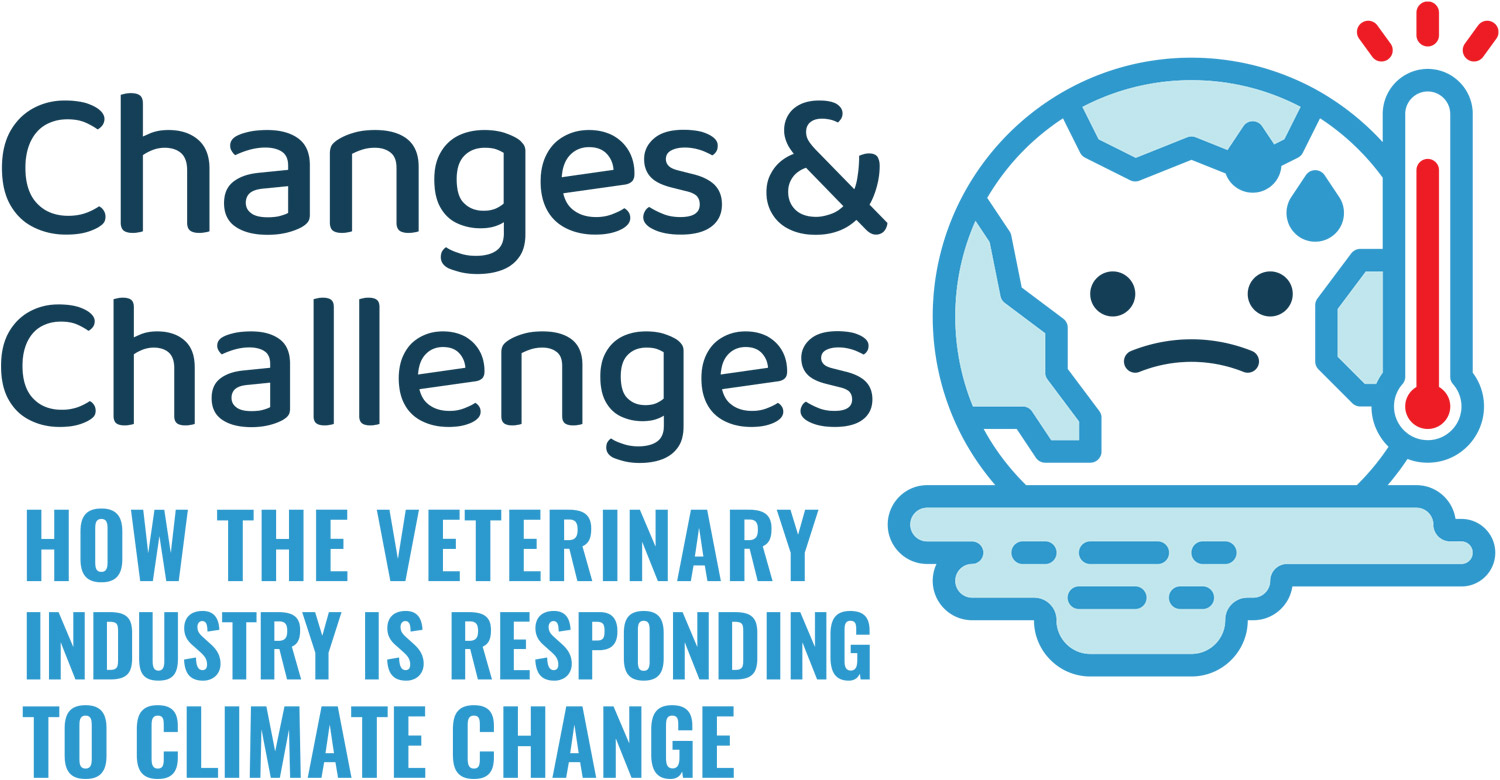
Photos by Dr. Colleen Duncan
n July 2023, the American Veterinary Medical Association (AVMA) endorsed the World Veterinary Association’s position statement on climate which declared climate change a global emergency. In doing so, the AVMA signaled its full support for the veterinary industry to use every skill they had, and to develop new ones, to help create a future of resilience and innovation.
The AVMA reaffirmed its commitment to the One Health planetary health framework, which emphasizes protecting animal and public health from increasing temperatures and heat stress, extreme weather events, the pollution of air quality, threats of vector-borne diseases, food safety and security, water-related health issues and safeguarding mental health.
As veterinarians worldwide are defining and establishing their roles in helping to combat the health impacts of climate change on animals, veterinary colleges like Colorado State University’s College of Veterinary Medicine and Biomedical Sciences in Fort Collins, Colorado are working to educate the veterinarians of the future to be stewards of planetary health.
“Climate change makes all animals sick. We are critically close to the point of no return,” says Dr. Colleen Duncan, veterinarian and professor of preventative medicine and pathology at Colorado State University’s College of Veterinary Medicine and Biomedical Sciences.
“As public health professionals,” she continues, “veterinarians are uniquely poised to be contributors to climate change solutions, and they should be actively engaged in policy decision-making and empowered to take active roles in interdisciplinary conversations surrounding this important issue.”
“We need to change our consumptive behaviors to slow it down,” states Dr. Danielle Scott, a veterinarian who also has a master’s degree in Environmental Science and Management, is working towards her PhD in veterinary epidemiology and is doing a residency in preventative medicine at CSU’s James L. Voss Veterinary Teaching Hospital.
“Environmental health in general is my motivation,” Scott adds. “You can’t address it without addressing climate change. Climate change is the number-one threat to human and animal health. It’s the big neon sign.”
Preventive measures, such as protecting natural ecosystems, recycling and practicing environmental sustainability can not only minimize the impact of climate change on animals and humans, but promote resiliency.

“Healthy animals are more resilient to everything,” says Duncan. “Veterinarians and veterinary teams can do easy things like reducing their own environmental footprint in the workplace, landscaping, protect pollinators, expanding animal health care to those in need, and talking about that.
“Research shows that veterinarians are trusted messengers,” she continues. “The public is interested in hearing from them, and they can be champions of important sustainability messages. Talk to 4H and little kids about the importance of getting exercise and eating nutritious foods. Don’t pour things down a drain. It affects fish. Let water run naturally through watersheds uninterrupted. Talk about how important clean air is for everybody.”
Air pollution is a growing threat for animals, especially those who live outdoors most or all of the time. Dr. Scott is currently engaged in a research project to measure the vulnerability of animals to air pollution. She is studying the impact of air pollution on racehorses, specifically PM2.5 (particulate matter measuring 2.5 microns), which is the primary pollutant found in wildfire smoke. The fact that there is a large amount of existing, high-quality data on racehorses in general was one reason she decided to do her study on them.
“Racehorses are phenomenal athletes that live and train outdoors,” Scott says. “With their huge lung capacity, they inhale large amounts of air, which is even greater when they workout, and therefore can be at risk of experiencing higher levels of air pollution exposure. This allows them to serve as a sentinel species, which will provide opportunity to assess risk that can then be translated to other vulnerable species, as well as provide an understanding of the health risks from air pollution exposure.”
PM2.5 levels spike during smoke events, and they can get all the way into lung alveoli and cross into the bloodstream.
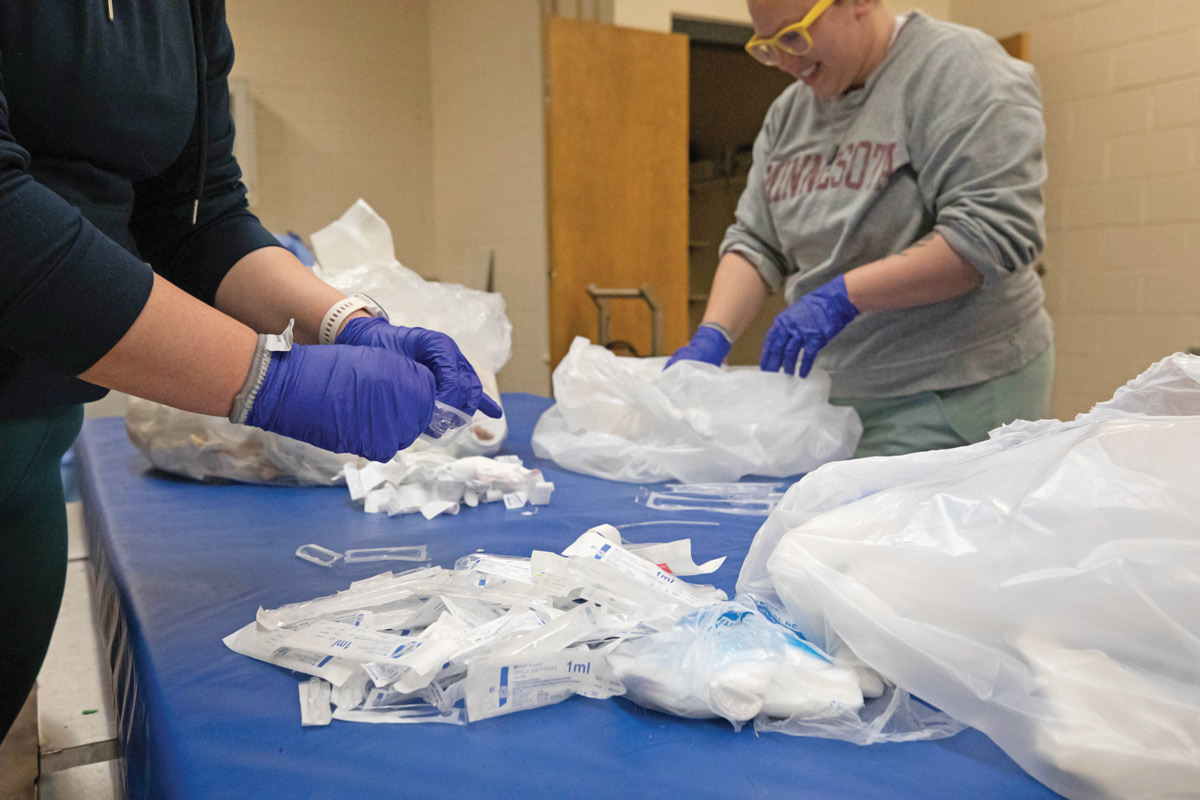


“Not many studies show the associated health impacts in animals,” she adds.
Her research, still in its preliminary stages, can be translated to other species to protect animal welfare, such as whether or not to train racehorses or race them during air pollution events, or whether other highly vulnerable animals like the average dog should be kept inside during pollution events, for example. However, the veterinary industry itself also needs to be part of the solution.
“We’re looking at how climate change affects health and how delivery of care contributes to climate change,” shares Scott. “It is a contradiction to protect animal health and use tools that are highly impactful in releasing greenhouse gas emissions that contribute to climate change. For example, anesthesia is a greenhouse gas. There are alternatives to its use, such as the use of intravenous anesthesia and flow gas techniques.”
CSU’s veterinary college is even using its hospital as a case study in changing their environmental footprint.
“We’re getting a lot of support for it,” says Scott. “Everybody truly cares about it and wants to minimize the impact but need information on how to do it. We’re working to fill that gap. How can we deliver care without harm?”
They also work in collaboration with the Veterinary Sustainability Alliance, a non-profit organization that is working with the veterinary industry to reduce emissions that drive climate change, promote preventative medicine, protect the human-animal bond, protect natural habitat and more throughout North America.
“There are many little things, but collectively they can make a big difference,” says Duncan. “Reducing energy use by unplugging computers when they are not in use, recycling materials, not using plastic to package things, use renewables, re-evaluating how companies build and create things, and how supplies are transported can all make a difference. There’s an economic advantage for vets to be knowledgeable in environmental sustainability, too.”
In addition to the other changes and challenges they are working on to help prepare the veterinary industry for climate change, Colorado State University is building a new veterinary hospital. The building, which is scheduled for completion in 2026, will be a green-built LEED (Leadership in Energy and Environmental Design)-certified building, making it the first LEED-certified veterinary education facility in the United States. It will also be WELL certified. WELL-certified buildings meet high standards for construction that enhance the mental health of those who work in them.
The college is also implementing a new curriculum, which will focus more on preparing students to meet the needs of animals now and in the future, including an expansion of preventative care, environmental sustainability and more. But there is one thing will not change…
“It’s so important to keep people and their pets together,” emphasizes Scott. “Pets foster health.
“By the time the new hospital opens, the changes being made will have been embedded into our culture; our practices. It will be how things are done,” she concludes.






Photos provided by Steven Honzelka, DVM, DAVDC
 he most exciting trend in veterinary dentistry is the increased attention and interest in dentistry over the years,” shares Board-Certified Veterinary Dentist, Dr. Steven Honzelka. “We have gone beyond just having ‘Dental Health Month’ every February to having a rapidly growing dental specialty in this country, and worldwide.
he most exciting trend in veterinary dentistry is the increased attention and interest in dentistry over the years,” shares Board-Certified Veterinary Dentist, Dr. Steven Honzelka. “We have gone beyond just having ‘Dental Health Month’ every February to having a rapidly growing dental specialty in this country, and worldwide.
“In vet schools they are also teaching dentistry to the students in higher numbers than ever before,” he continues. “The exponential increase in board-certified veterinary dentists and dental residencies means the quality and accessibility to advanced care will continue to improve.”
At the young age of five years old, Dr. Honzelka knew he wanted to be a veterinarian. And at only 14 years old, he started working at a general practice where he discovered it truly was his calling. His dream and goal was to spend an entire career and lifetime in general practice. However, the specialty of dentistry was not part of that original goal.
“Before, during, and after vet school I did not like dentistry,” he shares. “We had some dental training in vet school, but not nearly enough. It was difficult to get excited about something you were not very knowledgeable about or skilled in.
“One day I found a small mass on the palate of my own 15-year-old dog,” Dr. Honzelka continues. “The next day I biopsied the mass and diagnosed maxillary osteosarcoma. I self-referred to Dr. Dale Kressin, a local board-certified veterinary dentist. During that visit, he opened my eyes to dentistry being more than just cleaning and extracting teeth.”
Following that initial appointment, Dr. Honzelka had a renewed energy and enthusiasm for veterinary dentistry, which guided him down a whole new path in the world of veterinary medicine.
“I started reading all I could find about dentistry in journals and VIN,” he says. “I started attending local dental CE lectures and labs, and attended the Veterinary Dental Forum. It didn’t take long for me to realize my true veterinary passion was in dentistry.”
“I spend a few hours each work day consulting on oral and dental problems, which includes post-operative rechecks and new pet dental evaluations,” he shares. “I typically spend the rest of the day in surgery performing dental and oral surgery procedures (and writing records). This is often in the form of routine and complex dental extractions, oral biopsies, tumor removals, fracture repairs, oronasal fistula repairs, and more. We also perform a fair number of endodontic procedures (root canal therapy, vital pulp therapy, etc.), prosthodontics, restoratives, and some orthodontics.
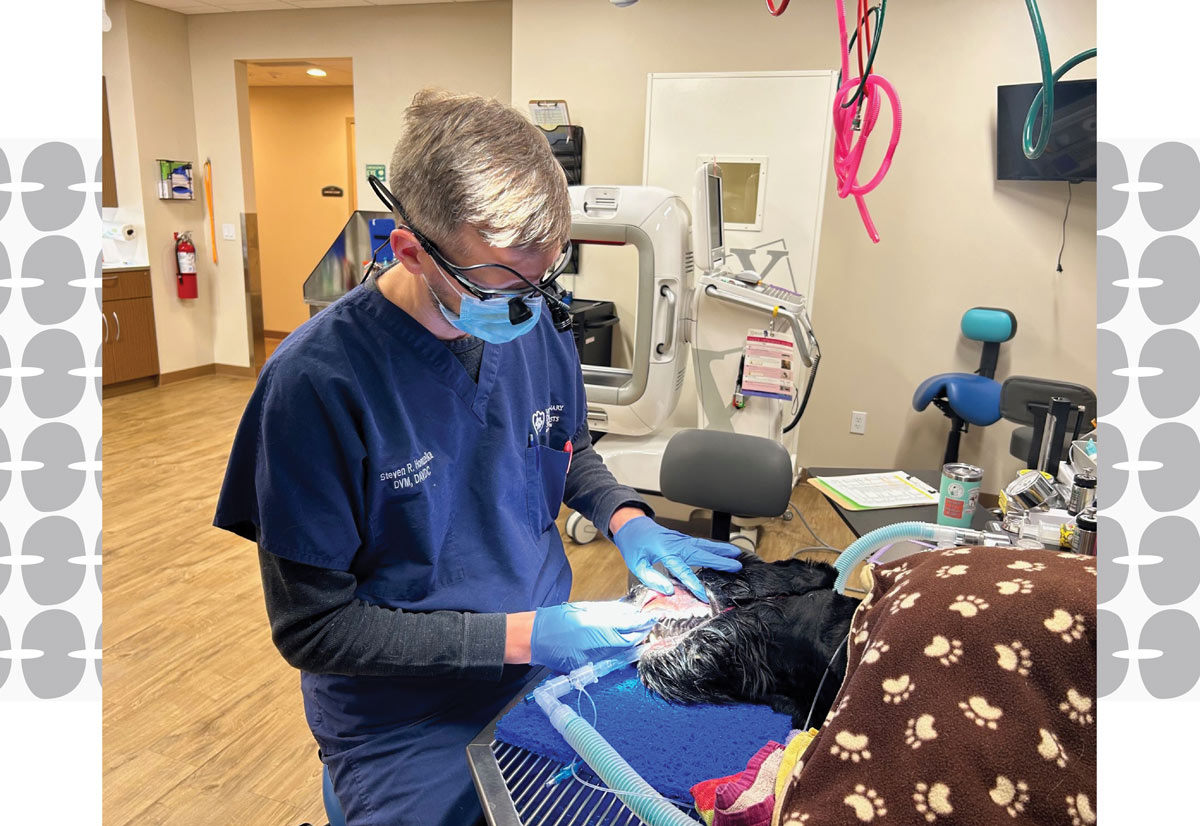
 It didn’t take long for me to realize my true veterinary passion was in dentistry.
It didn’t take long for me to realize my true veterinary passion was in dentistry. 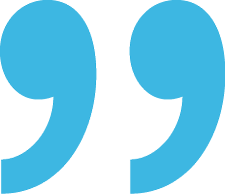
While the more difficult dental cases are referred to veterinary dentists, this does not discount the role that general practice veterinarians still play in the oral health of their regular patients. But there is always room for improvement.

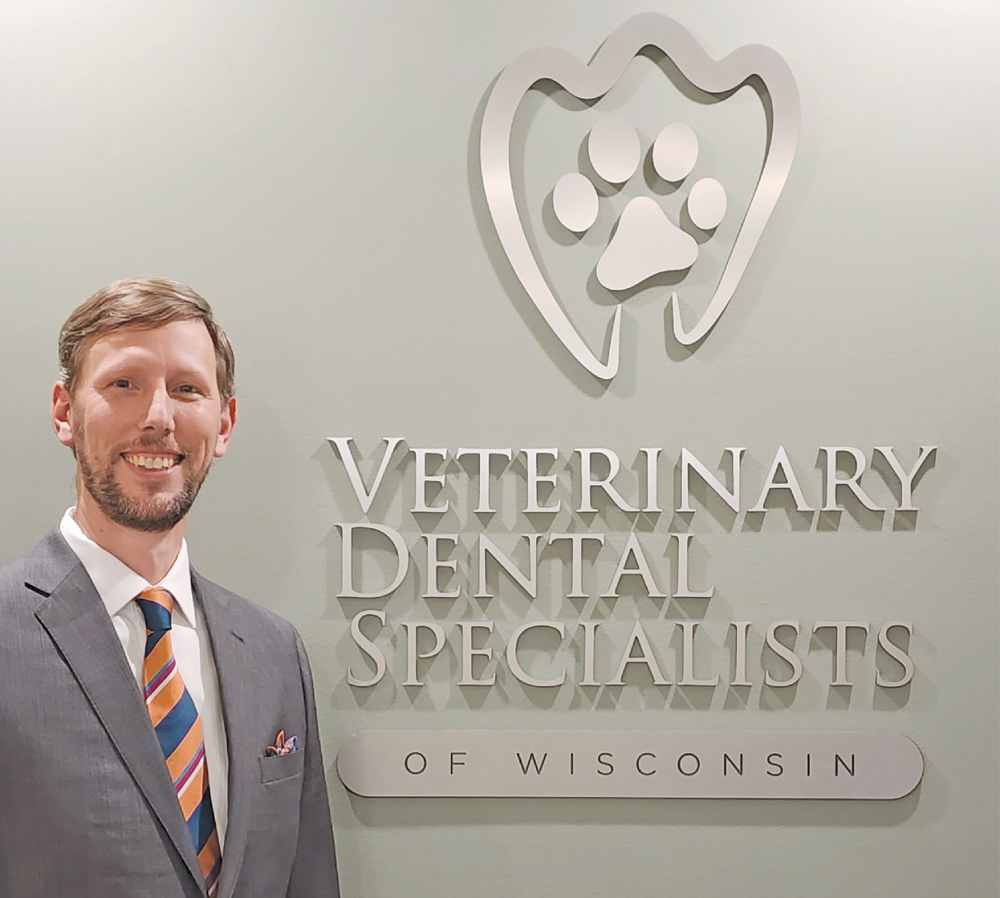
“Utilize staff to help educate clients by demonstrating tooth-brushing, discussing home care products, and consistently delivering a message,” he continues. “Staff education starts with the veterinarian. At least one veterinarian in the practice should seek out additional training. This not only includes lectures and wet labs, but also marketing. The technical staff can also take dental CE courses to improve what he or she can offer the clinic. The practice’s ‘dental staff’ can then assist in training the rest of the staff—other doctors, technicians, and front office staff.”
“It was not that long ago that only a handful of practices had intraoral dental radiograph capabilities,” Dr. Honzelka shares. “Today, most practices have dental radiography. The next step in dental imaging has become Cone Beam Computed Tomography (CBCT). About five years ago, the majority of dental practices did not have advanced imaging unless they were at a large multi-specialty referral practice or university. Today, a large percentage of stand-alone dental specialty practices have CBCT units.
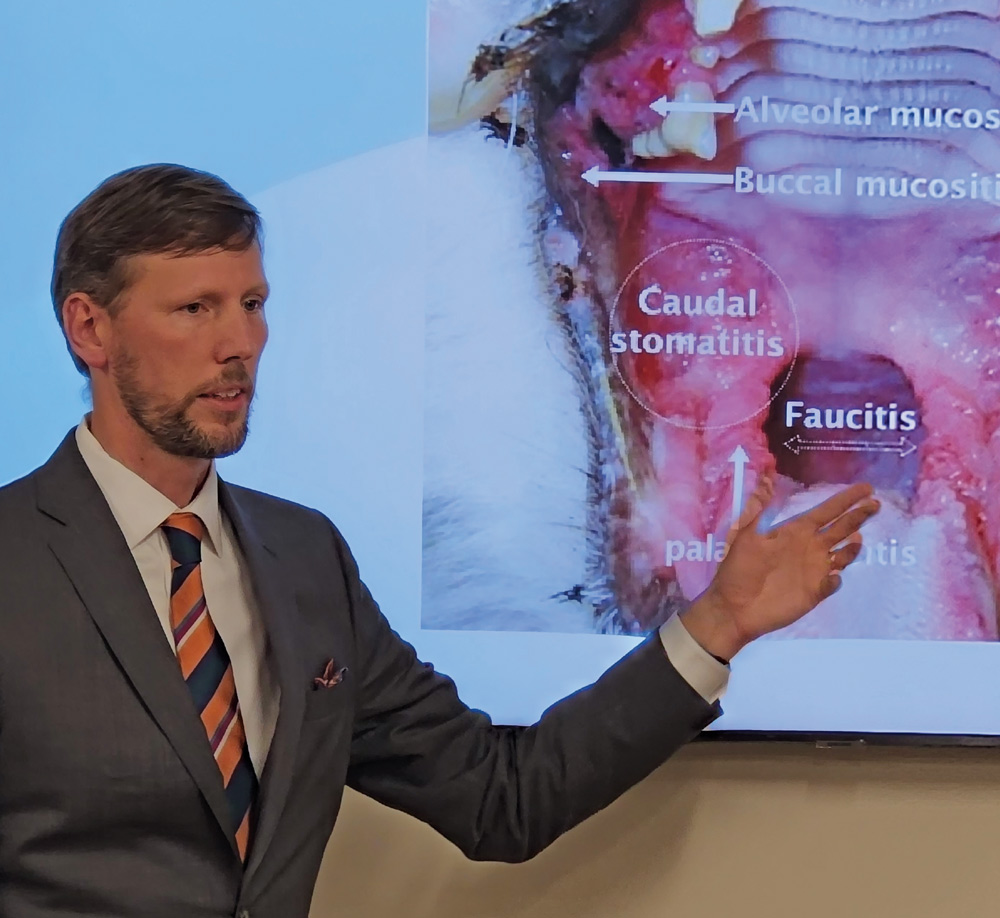
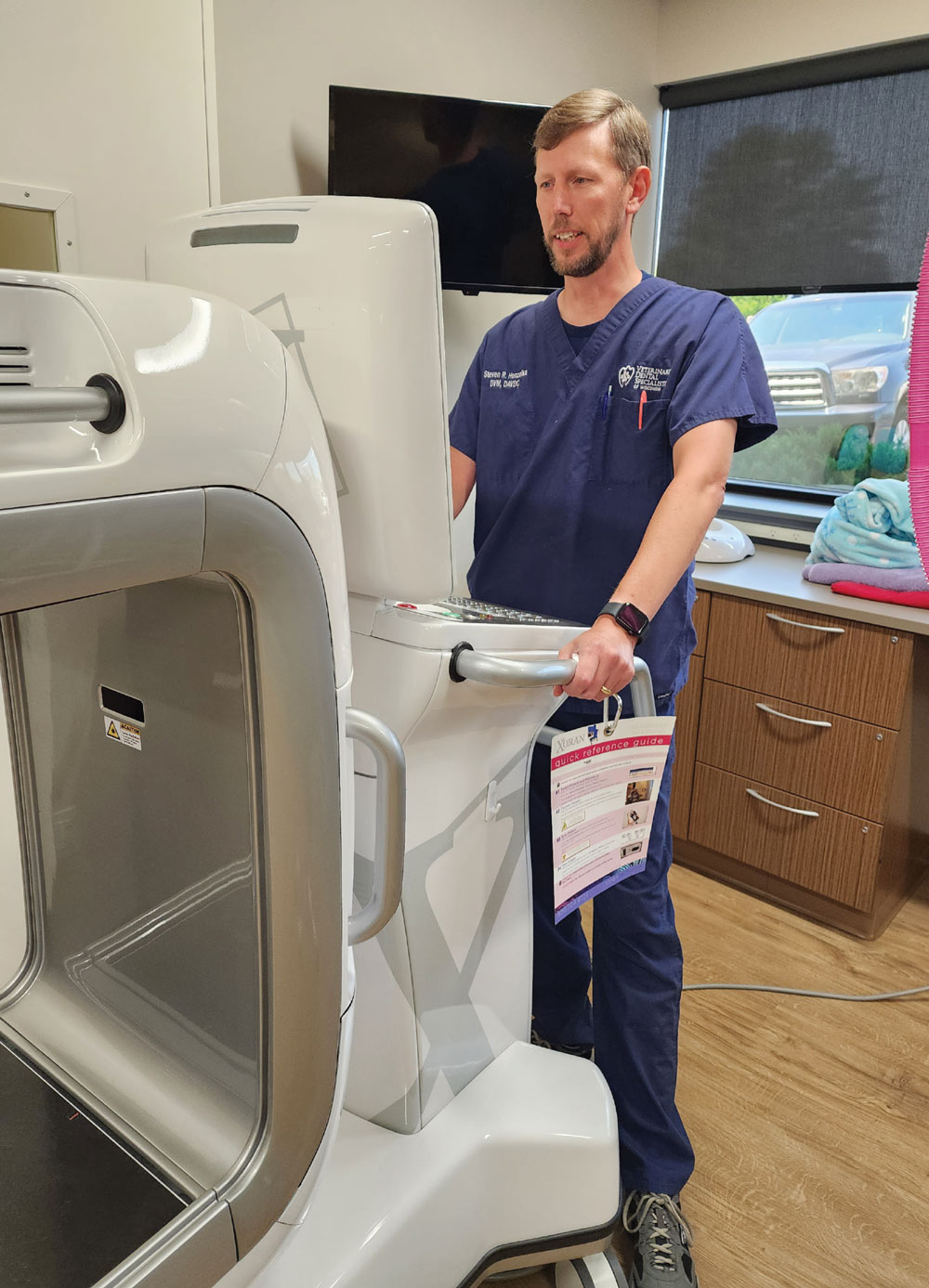
 There are two ways to improve dental health in the general practice: education for clients and education for staff.
There are two ways to improve dental health in the general practice: education for clients and education for staff. 
When not consulting on post-operative rechecks or performing extraction surgeries, Dr. Honzelka, a Wisconsin native, enjoys spending time with his wife and three children, two of which are in college and one in high school, and watching his children’s sporting events.
To conclude, he leaves us with this piece of advice: “My tortuous path to veterinary dentistry is evidence that the best-made plans and goals aren’t always what you are meant to do or be. There are a lot of opportunities within this profession that don’t require specialization. No matter what you do, be it in this profession or in life, make sure you are giving it your best.”



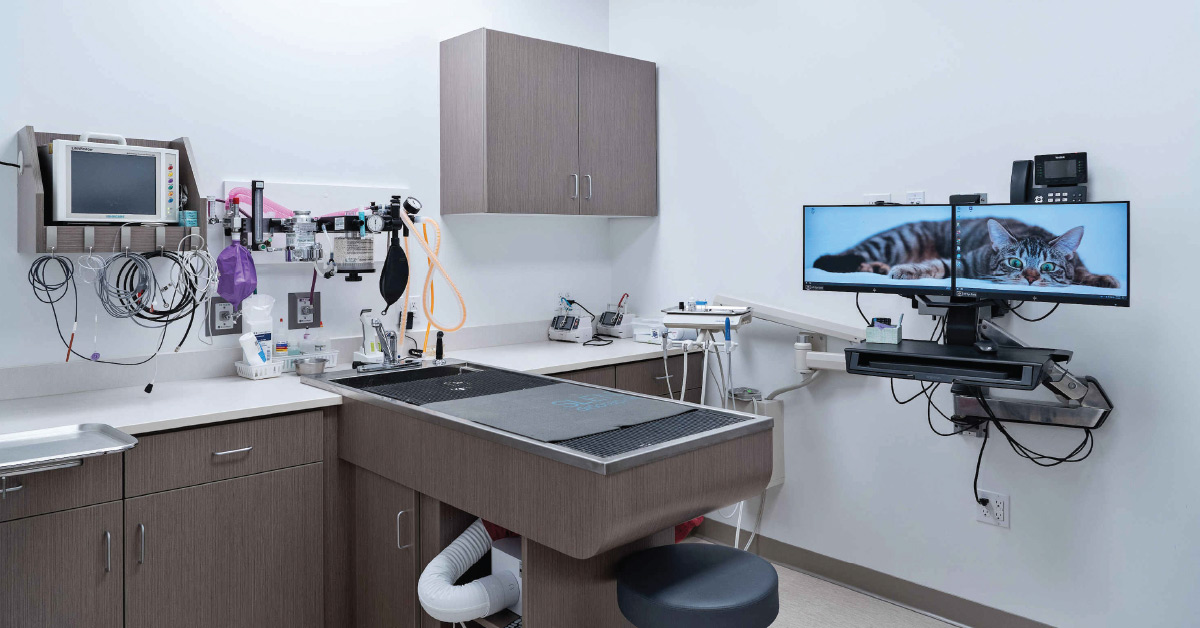
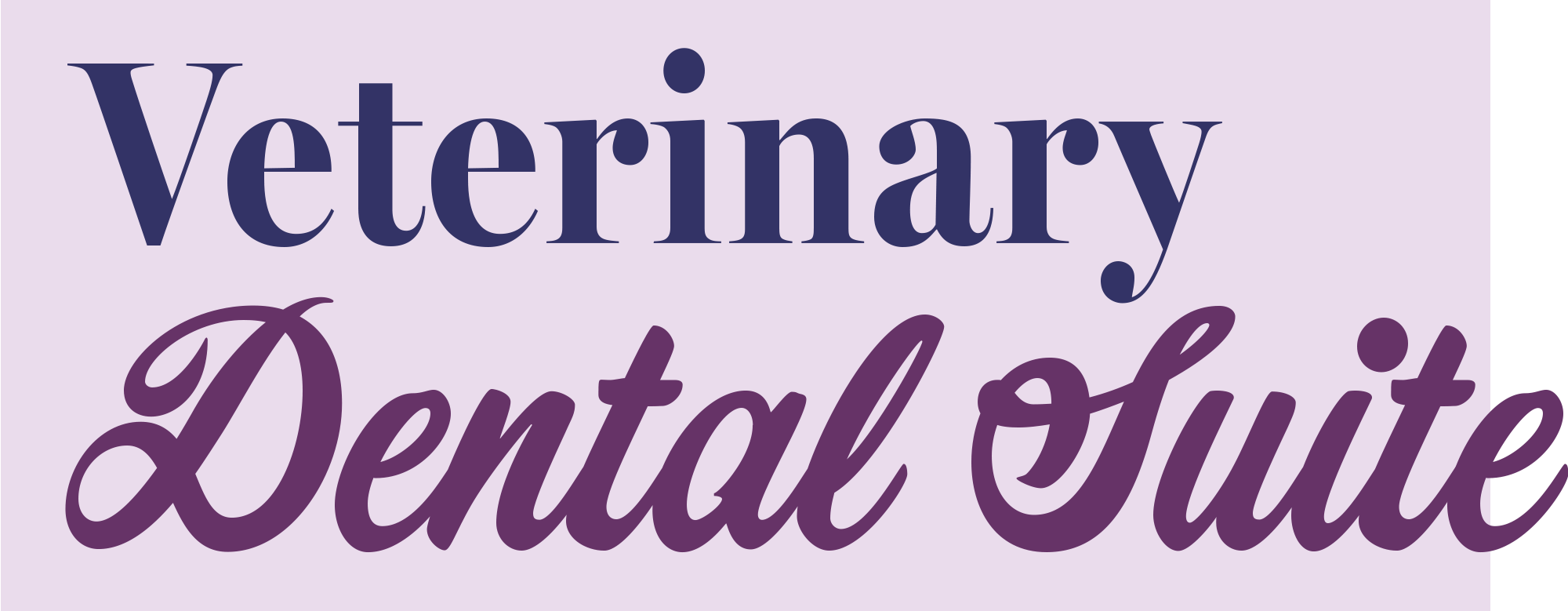
Photos provided by MD Architects
s an animal care professional, there’s a responsibility to ensure that your practice delivers the highest quality care in an environment that is functional, comfortable, clean and aesthetically welcoming. Creating this environment from scratch or within an existing space isn’t always easy, but becoming familiar with the design process can help prepare you to create a state-of-the-art space.
Many of these answers may be dictated by the available space or funds for this project. Nonetheless, walking through a basic programming and needs assessment is a vital first step.
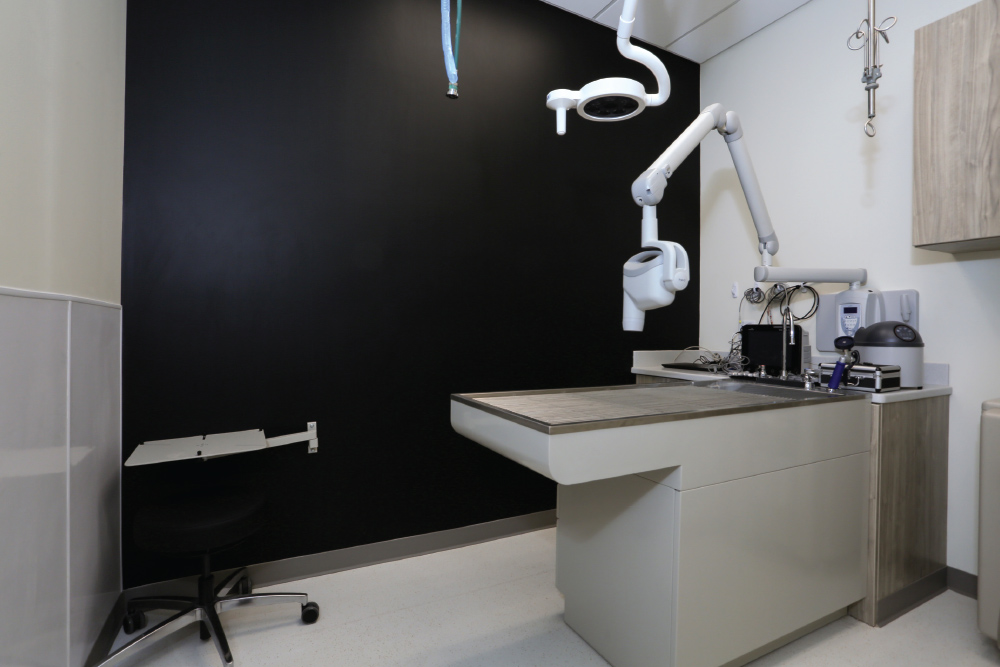

Consider the auxiliary aspects of lights, power, plumbing and medical gas. The locations of these are often dictated by the larger pieces of equipment. Medical gas needs to be in a location where it is easily accessible, yet not in the way of your team while working. Power needs to be where it best serves the equipment. Overhead lighting and medical exam lights should be oriented to avoid creating any shadows or dark spots while a patient is on the table. It can’t be overstated enough that every inch of space counts!
A dental suite may be a small section of your veterinary practice, but designing for one requires keen attention to detail and an abundance of thought. Renovating or expanding your space to accommodate a dental suite won’t just affect that wing or section of the building, but the animal hospital as a whole. You’re constructing an operational veterinary hospital to deliver the highest quality care possible and a space to foster a positive professional environment for your team. By understanding the process that comes with creating an innovative dental suite, you’ll set your hospital up for successful years to come.


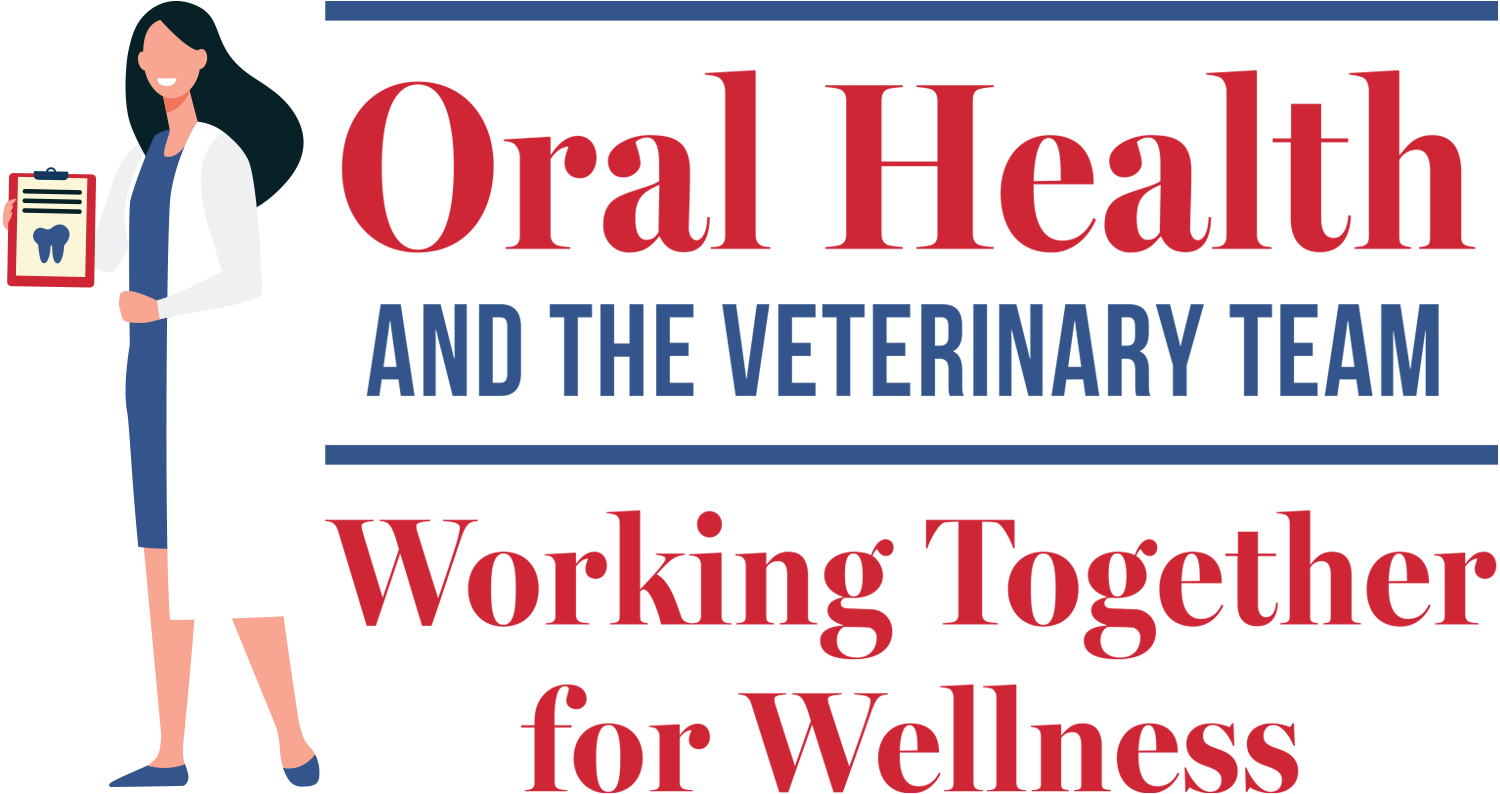

By Kara M. Burns, MS, MEd, LVT, VTS (Nutrition)
very individual working in a veterinary hospital is part of the veterinary team, and all members of the team are passionate about their specific role and how that role benefits the pet. Ensuring the health of the pet involves a team approach by working together to care for the pet and identify and alleviate potential health issues.
Oral health is a place where the entire veterinary team can make a significant positive impact on pet health. The oral cavity is constantly inundated by bacteria and provides the perfect environment for microbial growth. Dental disease causes pain and discomfort, and the associated disease processes may lead to systemic issues.1 Veterinary care team members know that animals require dental care to maintain oral and overall health; however, dental health is seldom top-of-mind for pet owners.
Additionally, many animals hide pain and obviously cannot tell the caregiver where it hurts. Oral malodor, changes in eating behavior and drooling are often accepted as “normal behavior” in pets by their owners. Therefore, standard procedures guiding the efficient operation of every veterinary team should always incorporate protocols for evaluating oral health whenever possible due to the importance of dental health to the overall wellbeing of the pet.
A thiol test powerfully enables a whole-team approach to oral health, especially because the test can be administered by a veterinary technician or veterinary nurse and then interpreted by the veterinarian. This test provides a fast, objective assessment of the pet’s periodontal health that has been proven to enhance pet owner adherence to treatment recommendations.2
This dental health example shows the importance of veterinary teams working together effectively for the benefit of their patients. Companion animals’ oral health needs are a critically important aspect of their health care and essential to maintaining every animal’s wellbeing.
All members of the veterinary team are passionate about the needs of the pet, so working together to address oral health issues is an opportunity for the team to do what they are uniquely positioned to do: Help the pet owner understand and address their beloved family member’s needs so they can live a healthy and joyful life.
- Burns, KM. The Importance of Dental Homecare in the Management of Periodontal Disease. The NAVTA Journal. December 2019/January 2020. Pp. 9-16.
- Goldstein G, Chapman A, Herzog L, et al. Routine use of a thiol-detection test in every wellness examination increased practice dental revenues and enhanced client compliance with dental recommendations in veterinary general practice clinics. J Vet Sci Technol. 2016;7(2):312.



By Louise Dunn
uring the pandemic, it seemed as if everyone was suffering from the stress of too many appointment requests and not enough hours in the day to see all the patients. Fast forward to today, and your practice is still likely suffering from this same problem. Looking back, is it possible that appointment scheduling snafus were an issue before the pandemic, and the pandemic just exacerbated an existing problem that continues up to today?
Unfortunately, how you scheduled appointments may have already been on the verge of breaking years ago. An overbooked appointment schedule may be one symptom. To fix this, you need to look deeper into the root cause of your scheduling snags and what you can do about them.


To find out, you first need to dig a little. More specifically, you need to find out where your practice’s capabilities match client needs in a way your competition can’t.1 And this starts with identifying three key elements: your competition, your clients’ needs, and your capabilities. Achieving the sweet spot for optimal scheduling requires a strategic process that looks at all three elements.

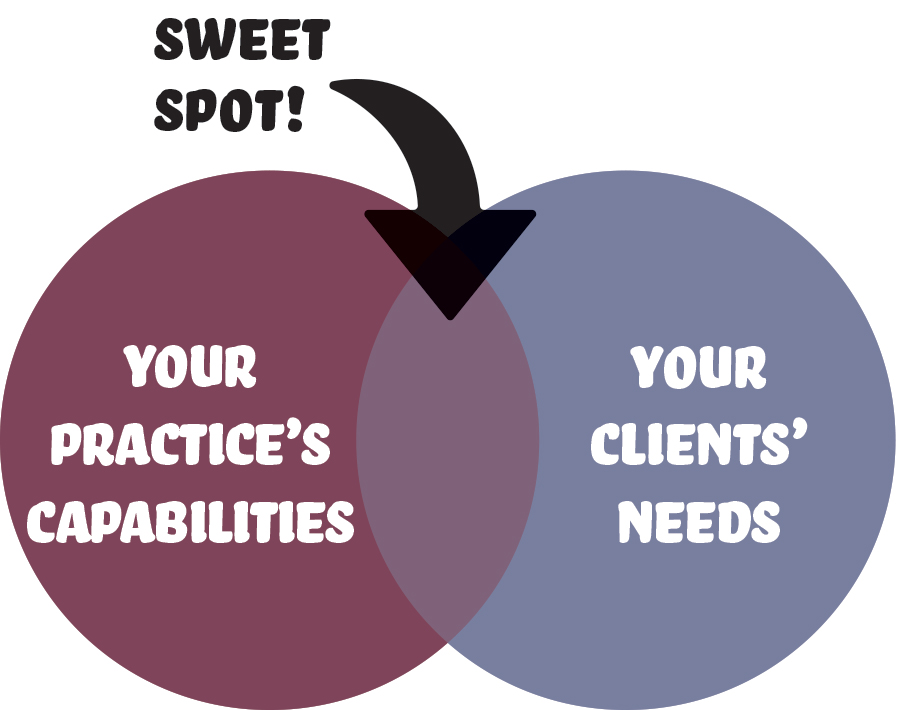


Listen to what your clients are saying. Did they switch to your practice because their last veterinarian never had any openings? Do they talk about how easy it is to schedule with their dentist but scheduling an appointment for their pet takes twice as long and feels as if they have to jump through hoops to do it? In the big picture of competition, your competitor is anyone your client compares you to, so look beyond veterinary and monitor trends in other industries.

Asking, “How easy was it to schedule your pet’s appointment?” sounds simple enough, but let’s get a little more specific. You must explore the entire client journey—from requesting an appointment to checking out—because all those touchpoints factor into setting up your appointment schedule. You may want to select a specific group of clients, making sure it is diverse (e.g., age of clients and pets, services requested, time and doctor preferences, scheduling methods preferred, etc.).
Consider asking your clients for suggestions on technology use, automated processes or other customer service innovations they feel would be beneficial. Using technology can not only improve the client experience, but it can also improve how the practice allocates time and schedules the team.

Identify what capabilities you need to develop to overcome scheduling snags, best serve your clients’ needs and efficiently schedule the team.

Recall that the sweet spot is where your practice’s capabilities match your clients’ needs in a way your competition can’t. You looked at what competitors were doing, asked key clients about their needs and assessed your capabilities. Your next move depends on your findings, but here are some things your colleagues are doing to improve access to care and relieve appointment headaches:
- Holding huddles to review the schedule and map out a plan of action
- Reserving slots for same-day appointments
- Reserving times for walk-in appointments
- Forward booking appointments
- Setting up a 24/7 veterinary nurse advice line
- Conducting virtual exams
- Establishing Technician/Nurse appointments
- Using a transcriptionist in the exam room (e.g., a vet assistant or using a virtual transcriber)
- Creating an Admit Nurse position
- Creating a Floater DVM position to handle walk-ins, emergencies, work-ups, and care for hospitalized patients
- Repositioning what team members are responsible for so as to work at the top of their license more effectively (e.g., not having a veterinarian draw blood when a technician or assistant can do it)
- Conducting client education classes instead of using up exam room time (especially for puppy and kitten topics)
- Creating a Physician Assistant position utilizing veterinarians who graduated out of the country and have yet to be licensed in the U.S.
- Contracting with a semi-retired veterinarian to conduct virtual consults
- Streamlining paperwork by completing it electronically in advance of the appointment
- Changing exam room procedures to mitigate inefficiencies (e.g., the use of scribes or Fear Free techniques).
Some of these options address available time slots to mitigate overbooking, others expand access to care via other means of seeing a medical professional, some seek to reduce time spent in an exam room, and others utilize different positions to handle the workload. There is no one-and-done solution found on this list, but it demonstrates that your colleagues are thinking beyond only an overflowing appointment schedule.
Your action plan depends on your pain points because your practice is unique, as are the mix of patients you see, procedures you perform and treatment plans you recommend. Your choice also depends on where you want to develop your capabilities for future client and business needs. Don’t take the stance that “this too shall pass;” that your scheduling problem resulted from the COVID pandemic, and you will soon be back to your old ways.


The following are efficiency indicators to track each quarter:
- Team and DVM hours per transaction (should be 1.33-2.33 for best efficiency)
- Revenue / FTE DVM
- Invoices / FTE DVM
- Support-team wages as a percentage of revenue.
Start with the numbers from the past year and set goals for the next quarter. Implement a few changes to how appointments are scheduled and how the team is scheduled to see if it changes the numbers.
In addition to efficiency indicators, conduct a time study to track how much time is needed for your services. After all, there have been advances in technology and changes to your standard procedures over the years—did you ever evaluate how these changes affect time slots for different services? Then, look outside the box (the exam room box, that is) for ways to change how you deliver your services to patients.
For example, can the practice have a virtual team performing virtual visits which then opens up exam rooms for other visits? Can a tech/nurse conduct client education via a Zoom call (such as new puppy/kitten issue or dealing with an ongoing long-term condition), thus relieving the strain on the appointment book from unavailable exam rooms? It behooves you to consider future business performance by looking at what weaknesses were exposed, what responses you made (or didn’t make), and where the future of patient care and client experience is going.
What constitutes the best appointment schedule is evolving…as is what clients value and expect in their veterinary experience. The veterinarian continues to lead patient care, but now shares the responsibility with other team members. The client sees those other team members as extensions of their pet’s veterinarian and is comfortable working with a team of veterinary healthcare providers.
Reimagining how your practice sees patients and communicates with clients goes beyond time slots on a computer screen. It is about improving access to care and staying connected with clients. It involves taking into consideration the wellbeing of the team in addition to the patients. The goal is to achieve schedule efficiency (both staffing and patient scheduling) without sacrificing accessibility or quality of care. Take time to determine your scheduling sweet spot and improve how you provide care to your patients.
- Collins, D., Rukstad, M. (2008, April). “Can You Say What Your Strategy Is?” Harvard Business Review, page 89. https://idea-sandbox.com/blog/strategic-sweet-spot/



By Marisa Brunetti, VMD
urnout. It’s a word we’re hearing more and more in the world of veterinary medicine. And unfortunately for too many of us, it’s a reality.
In a study published in the American Veterinary Medical Association Journal, 86.7% of U.S. veterinarians had ProQOL burnout scores in the moderate or high range. Taken together, the long hours, complex cases, emotional demands and traumatic situations—not to mention the challenges of managing client and interoffice dynamics—can be overwhelming. Add stress and physical exhaustion to the mix and it’s a petri dish for personal crisis.
Worst of all, burnout and compassion fatigue can feel like an assault on our very selves. We go into this profession to help others, and when we hit our own emotional and psychological limits, it can bring up feelings of shame and guilt. We’re healers. So why can’t we heal ourselves? Of course these negative feelings only compound our existing fears and sorrows.
These days, we all hear way too much about creating our own “work-life balance.” While we are ultimately responsible for ourselves, the conditions that have led so many of us to this place in the veterinary industry are not in our control. It’s not just about our self-care or taking time to do yoga, although those things help. What we need is something much bigger—a cultural shift in our workplaces that centers our wellbeing.
- Take Your Time. Take your PTO when you need it. It’s owed to you—don’t squander a minute of it. Dedicate time each day or week to activities that recharge and rejuvenate you. This can include self-care like exercise, hobbies, mindfulness practices, spending time with loved ones, or engaging in activities that bring you joy and relaxation. The work will never be done, but you need to step away and nourish yourself.
- Establish Boundaries. Define specific working hours and avoid bringing work-related tasks or stress into your personal time. Communicate these boundaries to colleagues, clients and employers. Assertively protect personal time and say no to additional work or commitments.
- Put Yourself First. Ask for support from your employer to help mitigate burnout. If your employer is unwilling to assist you or acknowledge these issues, then consider finding another employer who will take your wellbeing seriously.
- Seek Professional Support. Don’t hesitate to seek professional support if you’re experiencing stress, burnout or mental health challenges. Reach out to therapists or counselors who specialize in working with veterinary professionals. They can provide guidance and coping strategies tailored to your unique needs. You can also make use of resources offered by veterinary associations or organizations that focus on improving wellbeing in the industry.
- Address Burnout and Compassion Fatigue. All employers in this industry should be willing to acknowledge the realities of veterinary life and the high-stakes mental health risks that are in play. Foster a culture of support and understanding by providing opportunities for debriefing and counseling, as well as ongoing open dialogue among employees. Schedule regular staff meetings to discuss challenging cases and ways you can better support your team. Also make sure your team takes all of their PTO each year. Did you know research shows preventing doctor burnout will save your clinic an average of $17,000-$25,000 a year?
- Foster a Supportive Work Environment. Lead by example for your employees by demonstrating your own strategies for wellness. Give employees access to mental health resources. Create workplace policies and procedures that promote open dialogue, feedback gathering, peer support and mentoring across multiple channels, including online and in person. Allow your staff to say no and be sure to honor their boundaries. Set the example by keeping appointments on schedule so the clinic can close on time and your team can get home as scheduled.
- Utilize Relief Staffing Agencies. Whether you’re a large hospital or a small private practice, relief staffing agencies are a valuable resource to have. Hiring relief vets gives clinics the ability to provide their own staff with the time off they deserve without disrupting the flow of patients or revenue. Relief doctors can cover your employees’ parental leaves, leaves of absence, time off for continuing education and other situations. They’re a great solution when you’re understaffed or just want to lighten the load to prevent your staff from burning out.
The mission of this non-profit organization is to enhance Indigenous representation, foster connections, and cultivate leadership for Indigenous professionals in veterinary medicine, as well as support Indigenous veterinary students. www.nativesinvetmed.org
Instead of a traditional dinner date at a nice restaurant, stay in and surprise each other with a delivery or takeout option you think your partner would enjoy. And don’t forget the desserts!
Hosted on JUNIPER, a groundbreaking, women-owned online community that provides a platform for Generation Z and Millennial dog parents, users can upload a photo of their dog and choose a superlative such as “Fastest Zoomies” or “Goofiest Smile.” JuniperPet.co
Get 10 RACE-approved CE hours in veterinary dentistry taught by six board-certified veterinary dentists AND have a vacation at a wonderful destination at the same time. thevetdentists.com/dental-vetcations
With the rise in popularity of chickens being kept as pets, more owners are now seeking out veterinary care for their flock. If your practice doesn’t treat the feathered variety, those that do can be found on poultrydvm.com
Hosted on JUNIPER, a groundbreaking, women-owned online community that provides a platform for Generation Z and Millennial dog parents, users can upload a photo of their dog and choose a superlative such as “Fastest Zoomies” or “Goofiest Smile.” JuniperPet.co
With the rise in popularity of chickens being kept as pets, more owners are now seeking out veterinary care for their flock. If your practice doesn’t treat the feathered variety, those that do can be found on poultrydvm.com
Get 10 RACE-approved CE hours in veterinary dentistry taught by six board-certified veterinary dentists AND have a vacation at a wonderful destination at the same time. thevetdentists.com/dental-vetcations
In this heartwarming memoir about one woman’s veterinary career and the unique role pets play in our lives, Dr. Karen Fine shares touching, joyful, heartbreaking, and life-affirming tales that make up her career as a vet.
Similar to tennis but lower impact and more easily accessible, this fun-first activity is gaining in popularity! And, it can benefit your health by improving cardiovascular and pulmonary function, as well as balance and agility.
Taking place February 22nd-24th in Columbus, OH, the MVC offers consistently low registration fees for more than 300 hours of CE, plus networking and social opportunities for every member of the veterinary team. www.mvcinfo.org
In this heartwarming memoir about one woman’s veterinary career and the unique role pets play in our lives, Dr. Karen Fine shares touching, joyful, heartbreaking, and life-affirming tales that make up her career as a vet.
Taking place February 22nd-24th in Columbus, OH, the MVC offers consistently low registration fees for more than 300 hours of CE, plus networking and social opportunities for every member of the veterinary team. www.mvcinfo.org
Similar to tennis but lower impact and more easily accessible, this fun-first activity is gaining in popularity! And, it can benefit your health by improving cardiovascular and pulmonary function, as well as balance and agility.
Gain a better understanding of how to diagnose and treat kidney disease in cats and dogs with the help of IRIS (International Renal Interest Society). www.iris-kidney.com
The Merck Vet Manual App digitally enhances all of the information in The Merck Veterinary Manual, providing guidelines through thousands of topics, photos, illustrations, and videos of disorders and diseases, as well as clinical calculators, numerous reference guides, and hundreds of useful tables.



2 leading trade magazines for the pet professional in your life with all the content to assist them in keeping your pet healthy, happy and beautiful.
online or in print at www.barkleigh.com
Facebook.com/
barkleigh.prod
Twitter:
@barkleighinc

Thanks for reading our February/March 2024 issue!
